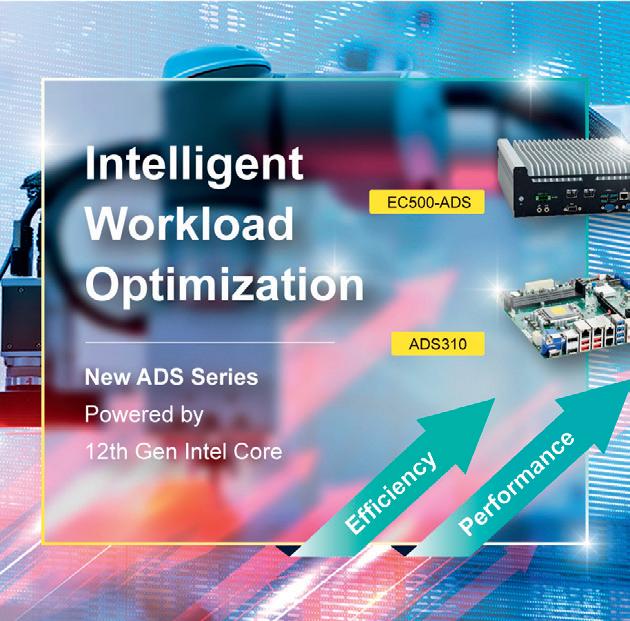







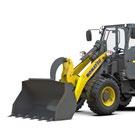




































































Historically, right from the time of the first Industrial Revolution that originated around two centuries ago, to the present era of Industry 4.0, technology has helped improve production and raise efficiency to unprecedented levels in industry. But even today, it is estimated that poor maintenance strategies reduce a plant’s overall productive capacity by 5 to 20 percent; the resultant unplanned downtime in turn costs manufacturers an estimated US$50 billion each year. In fact, ‘ The True Cost of Downtime’, a report released by Senseye, the leading global company for automated machine health management, estimates the direct and indirect costs of unplanned downtime to major manufacturers is up to a staggering US$1 trillion! These figures underline the importance of sound maintenance practices in industry today.
Maintenance of industrial machinery and equipment traditionally falls in three categories – reactive maintenance where assets are run to failure; preventive maintenance where the emphasis is on preventing problems before they occur; and predictive maintenance which goes a step further to predict or anticipate problems and take planned remedial action that increases plant reliability. Each of these three maintenance strategies has its advantages and disadvantages. Essentially, a company may adopt different types of maintenance services based on the value of assets as well as the seriousness of the situation should a breakdown occur. Most modern manufacturing plants have long abandoned the practice of reactive maintenance in favor of preventive maintenance and are now moving towards predictive maintenance. Since predictive maintenance monitors asset condition in real time and enables corrective actions before failures disrupt production, it is generally considered to be the most advanced and intensive type of maintenance. In other words, in the manufacturing ecosystem, predictive maintenance is now increasingly adopted as a strategy for dealing with unplanned machine downtime.


D’SILVA
Predictive maintenance increases manufacturing efficiency, saves on maintenance costs, and contributes to a healthy bottom line.
PREDICTIVE MAINTENANCE, ARTIFICIAL INTELLIGENCE AND
EFFICIENCY
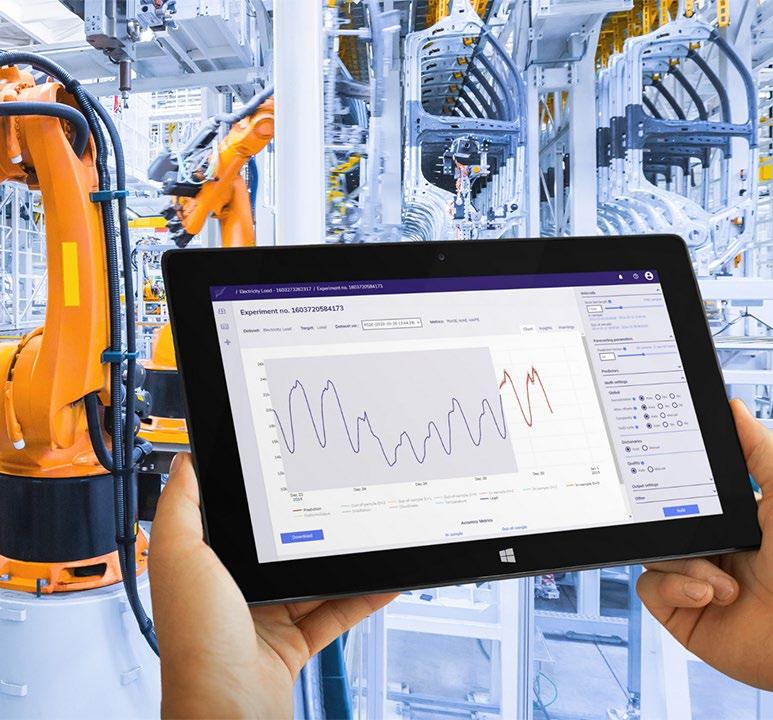
There is no clear record of the origins of Predictive Maintenance (widely referred to as PdM) in industry, but it has been prevalent in some form or other for several decades now, with automation and use of sensors facilitating what is known as condition monitoring. Some accounts mention that predictive maintenance began with condition-based maintenance, and attribute it to CH Waddington, who was a biologist assigned to the UK’s Royal Air Force during World War II. It was his observation that planned maintenance actually increased breakdown in aircraft (termed Waddington Effect) that led to the concept of PdM based on condition monitoring, which dramatically increased aircraft availability. Others believe that though PdM existed in some form or other, it was only adopted widely from the 1990s by the manufacturing industry.

What exactly is condition-based monitoring on which predictive maintenance is based? Condition-based monitoring may be defined as a strategy that makes use of sensors and other tools to continuously monitor the condition of machines and assets to determine their ‘health’ and predict their condition to decide when is the right time to intervene with maintenance, without disrupting the regular production schedule. There are various types of sensors that record a wide range of data, such as sound/noise, temperature, pressure, vibrations and even conductivity, which enables an engineer to predict the failure of an asset while allowing it to be repaired or replaced in advance, before a breakdown occurs. Predictive maintenance helps maximise the life of an asset and reduce maintenance costs and equipment downtime. As a result, it finds extensive applications in manufacturing, energy and utilities, aerospace, defense, transportation and logistics, and healthcare industries worldwide. Used effectively, predictive maintenance increases manufacturing efficiency, saves on maintenance costs, and contributes to a healthy bottom line.
If one looks at the Google search result for predictive maintenance market, it shows a large number of reports with wide variations, depending on the scope and segments covered by the research agency. Some of these reports cover the entire spectrum, including utilities apart from all industry segments, which explains the variation. However, one thing is common across all these reports; the CAGR is in the range of 20-30%, which indicates a very rapid growth. For the purpose of this article, the report pertaining to the manufacturing segment makes better sense. According to a research report released by ResearchAndMarkets.com in early 2020, the global market for Predictive Maintenance for Manufacturing Industry, which was an estimated US$1.2 Bn in the year 2020, is projected to reach a revised size of US$3.9 Bn by 2026, growing at a CAGR of 21.4% over the analysis period.
This healthy growth in the PdM market is characterised by three trends:
• The intense competition in the manufacturing industry is forcing companies to exploit all avenues of increasing productivity and efficiency of their operations, and effective asset performance management is among the top priorities.
• Most companies are now in the process of digital transformation of their operations where maintenance is getting a technology led makeover with use of advanced data capturing and analytics tools that facilitates endto-end integration of PdM with the entire lifecycle of the industrial plant.
• Stringent workplace safety regulations and growing emphasis on occupational safety norms coupled growing awareness among the tech savvy workforce.
Among the leading vendors of technologies catering to PdM are global MNCs like General Electric Company, IBM Corporation, Siemens, ABB, Robert Bosch, Rockwell Automation, Schneider Electric SA, Dassault Systèmes, Software AG, Accenture plc, Cisco Systems, Hitachi,
Honeywell, Microsoft, and Oracle Corporation, not necessarily in the same order.
Speaking about the Indian market, Preshit Murudkar, Managing Director & CEO, Comau India Pvt Ltd, confirms the general growth trend. The “India Predictive Maintenance Market if considered in a holistic way is a big market and is growing at a CAGR of 25%. It is expected to reach US $4 Bn by 2026, and further with the evolution of 5G technology this will disrupt, and bring in a lot of opportunities,” he says. According to him, the market by deployment modes is divided between On-premise and Cloud, and by verticals, comprises: Government and Defense; Manufacturing; Energy and Utilities; Transportation and Logistics; Healthcare and Life Sciences; and others.
Nimish Danani, Director Consulting Services, Hitachi Application Reliability Centre, has a different set of figures, in conformity with the observation made earlier about the variations. “Going by various research and reports, the global market for predictive maintenance in the next 5 years will be about $16 Bn to $18 Bn. In the last estimate I read it is growing at about 30% CAGR. The Indian market for
predictive maintenance could inch up to $4 Bn in the next 4 to 5 years growing at about 25% CAGR,” he says.

If predictive maintenance is generally considered to be the most advanced and intensive type of maintenance, it has further reinforced this position in the age of Industrial Internet of Things (IIoT), with data analytics adding to its reliability, making it an ideal solution. While sensors were always part of predictive maintenance practices, their modern versions are highly evolved and become intelligent, and in combination with remote diagnostic tools and analytics software, make predictions even more accurate than ever before. In effect, predictive maintenance relies mainly on the data gathered by sensors and analysed to get insights that facilitate early fault detection.
With IIoT, every machine or equipment in the plant is equipped with internal sensors for constant monitoring of running status. This real-time data collection, analysis and simulation provides insights on equipment performance, based on which maintenance schedules are planned, without interrupting regular production. But how effective is data analysis in making the correct diagnoses without
missing anything of critical importance? Sensors typically collect humongous amounts of data of which almost all is of routine nature. The anomalies are hidden in a fraction of this data. So in the end it boils down to the quality of data analytics, which opens the doors for artificial intelligence (AI).
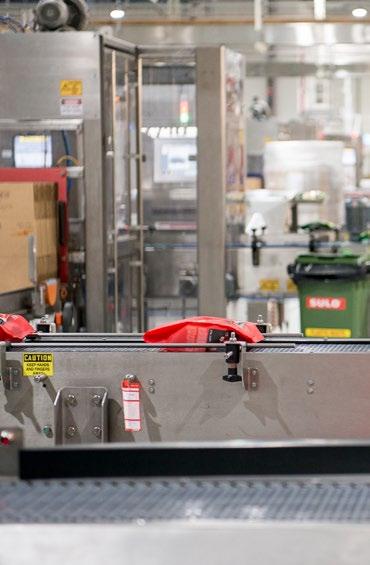

Artificial intelligence has wide applications in industry in the IIoT era thanks to its ability to make sense of the mountains of data generated by various sensors and devices. In ‘The True Cost of Downtime’ report quoted at the beginning, Senseye has demonstrated how by implementing AI-driven machine-health monitoring and predictive maintenance across large industrial organisations, it is possible to reduce levels of unplanned downtime by 50% and recoup investments in this technology in less than three months. In fact, predictive maintenance has been enriched and enhanced by the use of AI-powered algorithms which sift through the datasets gleaned from equipment history and maintenance logs. In a 2019 article published in Harvard Business Review, McKinsey partners Michael Chui, Nicolaus Henke, and Mehdi Miremadi have stated that in manufacturing, the greatest value from AI can be created by using it for predictive maintenance, thanks to its ability to process massive amounts of data, including audio and video, which means it can quickly identify anomalies to prevent breakdowns, whether that be an odd sound in an aircraft engine or a malfunction on an assembly line detected by a sensor.
Dassault Systèmes offers its 3DEXPERIENCE® platform to manufacturers which contains a suite of collaborative digital solutions to boost workforce optimisation. The company believes manufacturers have only begun to capitalise on artificial intelligence (AI) and machine learning (ML) capabilities on the factory floor today, for driving overall equipment effectiveness (OEE), optimising processes and creating a pivotal role in predictive maintenance. “AI is required for effective predictive maintenance. With it, manufacturers can evaluate multiple inputs like usage, vibration and noise directly from the machine, compare that to historical events and forecast when a machine failure is likely to occur. It then schedules the appropriate maintenance activities at the last reasonable moment before the expected failure,” states Mike Bradford, DELMIA Strategic Business Development, Dassault Systèmes.
Global technology giant ABB, which uses its Ability platform for Predictive Maintenance of assets ranging from turbines to compressors and diesel driven generators to motors, is also using AI in what the company calls a hybrid approach that combines domain knowledge with machine learning algorithms. According to ABB, merely collecting data to detect anomalies is not enough because forecasting maintenance is not straight-forward. To effectively schedule maintenance, it is necessary to predict how a detected abnormal condition is likely to develop in the future. The innovative hybrid approach follows a three-pronged process:
• Condition monitoring that can provide early detection of faults
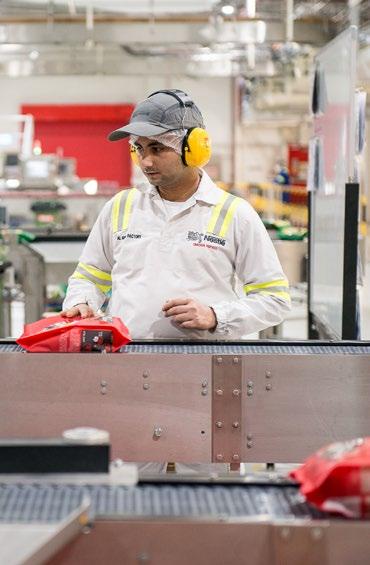
• Identification of specific failure mode(s) related to the fault detection, and
• Quantification of the extent of fault development to support maintenance planning.
Other technology companies are also riding the AI bandwagon when it comes to predictive maintenance. In January 2022, Siemens MindSphere® unveiled its first artificial intelligence application for industrial IoT called ‘AI for Everyone’, developed using the TIM InstantML technology from Tangent Works, a Belgian company. TIM, or Tangent Information Modeler, is an automatic predictive model building engine that automates the forecasting and anomaly detection process by analysing time series data and generating accurate models based on the patterns it detects. The aim of this new application is to reduce the technological barrier to powerful machine learning and AI tools. This no-code approach will allow people across manufacturing organisations to make informed decisions on future actions. “Thanks to the integration of Tangent Works’ InstantML technology, Siemens customers and partners can now better turn data into real and actionable insights and value. With the ability to use AI/ML to generate hyper-automated predictive analytics, even citizen data scientists can leverage data and achieve immediate insights, at scale. This ultimately reduces complexity and puts the power of IoT data in the hands of the user,” stated Raymond Kok, Senior Vice President of Cloud Application Solutions @ Siemens.
Schneider Electric, the global leader in the digital transformation of energy management and automation, has also demonstrated the use of AI-powered services through its EcoStruxure platform. It has documented a use case of the Nestlé Al Maha factory in Dubai of how the EcoStruxure technology evaluates data in real time from the plant’s electrical equipment and uses cloud-based predictive analytics to identify and resolve potential faults. With its open, scalable architecture, the EcoStruxure platform connects to smart devices across the electrical system and integrates with process control systems and enterprise data platforms. Data is analysed by cloud-based algorithms, and the solutions provide insights into equipment health and suggest predictive maintenance schedules, allowing for a proactive approach to asset management.
Comau, the Italian company, offers In.Grid, an innovative networking platform that combines digital and physical

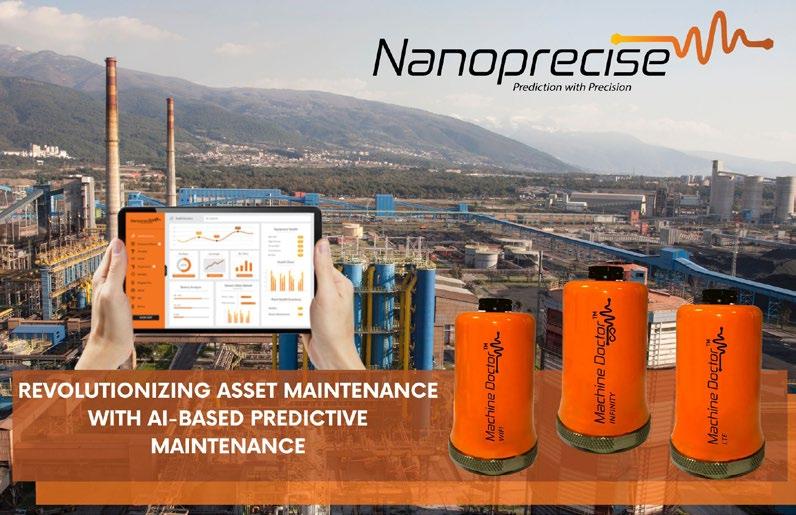
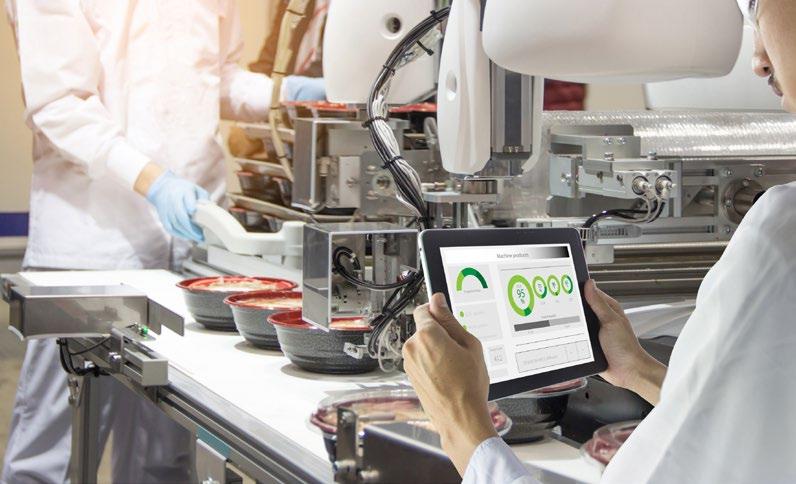
worlds through sensorisation, data analysis and realtime monitoring of equipment, systems and production lines. The data collection, processing and connectivity is done at a machine level, line level or plant level, while the data analysis platform with its high-level algorithms, AI capabilities and storage features can be hosted at the plant itself, at an external data center or on a private cloud. “Our In.Grid platform is aligned with market needs from IIoT or Industry 4.0 point of view from both critical aspects. For End Product Traceability, the In.Grid MES solution is one of the flexible solutions using the latest technology of docker & microservices not only scalable but also portable, upgradable. This includes features starting from flexible User Management, Product Configuration, Flexible Connectivity with any device, Production Planning, Quality Data Traceability, Alarm Management, Cycle Time Analysis, OEE and ANDON,” says Murudkar. In its other role for Maintenance of Plant and Machinery, the In.Grid platform is easily configurable for monitoring and predicting health of the machines which are critical to avoid unplanned breakdown. “Features like Digital A/PM (similar to G-Calendar), Predictive Analysis with CBM Alarms (auto learning configurable and customisable algorithms), Machine Alarm Analysis, real time monitoring of health and alarms, make it ideal to leverage the power of Industry 4.0 in a cost-effective and highly efficient manner,” he adds.
So whether it is GE and its various predictive maintenance technology platforms for different sectors, or Rockwell Automation’s Predictive Maintenance as a Service offering that leverages FactoryTalk Analytics and apply machine learning technology, a variety of companies offer solutions in the predictive maintenance space. “From established large players to start-ups who have specific products, solutions, platforms for helping companies implement predictive maintenance solutions, thereby reducing downtime, improving yield, profitability and uptime for suppliers,” says Nimish Danani.
While established companies are all well entrenched in this space, there are the proverbial new kids on the block – the start-ups – that are now creating a niche with their boutique offerings of hardware and software solutions, or a combination of both. One such company is Infinite Uptime, which began product development in 2017 and entered the market with a solution in 2020. “As markets matured to the Industry 4.0 reality, more and more manufacturing industries realised the potential impact of predictive analytics and IIoT in their manufacturing operations. We had to quickly scale our teams to meet the global demand and maximise our reach and serviceability for our customers,” says Dr Raunak Bhinge, Founder and CEO – Infinite Uptime. The company has since added 190+ manufacturing clients across 14 industry segments across the world, as their Digital Transformation and Reliability Services partner. To date, it claims to have digitised more than 750 plants, saving 6300+ hours of downtime which has resulted in more than USD 20 Mn being saved by the businesses.
Nanoprecise Sci Corp is another start-up that specialises in the delivery of comprehensive, cloud-based solutions for the lifecycle monitoring of equipment, using IoT, AI and Data science applications. This automated predictive maintenance solution provider offers an integrated AI-based
solution that consists of a unique 6-in-1 IIoT sensor and an AI-based automated analytics platform. The wireless IIoT sensor measures Vibration, Acoustics, RPM, Temperature, Humidity and Magnetic Flux. The analytics platform utilises advanced signal processing algorithms to analyse the 6 streams of data in real time for predicting the remaining time to failure. The company was recently awarded first place in the Mobility and Automobile Innovation Lab (MAIL) programme by Maruti Suzuki India Limited (MSIL), India’s largest automobile manufacturer. The programme offers tech start-ups with digital innovations an opportunity to do a Proof-of-Concept project with Maruti Suzuki India Limited. “It can be very difficult to monitor the condition of various machines, especially when it involves cyclic-operations. With our AI-based solution, automobile manufacturers can rely on an automated system to monitor the health & performance of machines and equipment sets in near real-time. It offers the capability to detect minor changes in their operational parameters, monitor progression, and provide insights before they impact production or cause downtime,” stated Prashant Verma, Co-founder & Product Head, Nanoprecise Sci Corp.
With so much at stake, predictive maintenance, which has made rapid strides in recent years aided by emerging technologies, would be an essential component of maintenance strategies for most companies. Speaking about the most prominent emerging trends, Nimish Danani is of the view that with adoption of predictive maintenance, there is a lot of data being collected, analysed and AI applied to build models to start predicting failures and forecast more accurate maintenance updates.
“Based on our experience and exposure within the Automation industry the following features are the most sought after,” says Preshit Murudkar, listing them as:
• Data Traceability
• Predictive Analysis & Maintenance
• Remote Analysis & Maintenance
• Customised reports and charts, and
• OEE & ANDON.
Going forward, the sector will see increased investment in predictive data analytics based on AI and ML to minimise downtime and maintenance costs. While adoption of IoT is also a given, digital twins and AR/VR/XR are other emerging technologies that will feature prominently in predictive maintenance. Finally, more vendors would offer ‘Predictive Maintenance as a Service’ like Rockwell Automation, to make it easier for the user industries to benefit from a single source solution.
Mitsubishi Electric Corporation (TOKYO: 6503) is launching “Automating the World” as the global slogan for its Factory Automation Systems business from 7th November, with worldwide commercial use starting on 8th November.
The new slogan expresses Mitsubishi Electric’s goal to leverage automation for the betterment of global society by combining advanced technology, experience and know-how, and customer support as a trusted partner. “Automating the World” was developed based on the voices of numerous Mitsubishi Electric’s stakeholders from around the world, including customers in the field of industrial automation as well as company employees involved with Factory Automation Systems. For China in particular, the global slogan will be followed by a special subphrase “zizai linghuo”, which is a unique phrase created based on a similar local phrase meaning free and flexible, to support local understanding of the global slogan.
In recent years, global society has been compelled to adapt to the growing needs for work efficiency, digitalisation and decarbonisation. Under Mitsubishi Electric’s current medium-term business strategy through the fiscal year ending in March 2026, the company is growing its factory automation systems business with intelligent manufacturing solutions and other technological innovations that are enabling customers to respond to change by transforming their businesses. Mitsubishi Electric is also developing advanced automation technologies in other fields to enable global society to respond to pressing needs for change.
Going forward, Mitsubishi Electric will actively promote its “Automating the World” slogan to grow its Factory Automation Systems business and further enhance its brand value.
Automating the World - The story behind Life has become more complex and, to some degree, more confusing. Manufacturing, and from a larger perspective Society, has gone through huge challenges and resultant changes.

The most impactful have been the rapid adoption of digitalisation, the pressing need to become sustainable in all aspects, from energy consumption to pollution reduction, and the need to cope with shrinking populations in many nations. It is important to address these social issues in order to realise a sustainable global environment while striving to realise a safe, secure and comfortable society that respects all people.
Despite all these changes it is comforting to know that there are companies and partners you can rely on. Mitsubishi Electric has consistently focused on creating “Changes for the Better” for a vibrant and sustainable society through continuous technological innovation and ceaseless creativity. The company’s Factory Automation Systems team are proudly finding new ways through the application of advanced technology, sharing know-how and actively collaborating with one goal, of applying and utilising automation for the betterment of all.
This is why we want to clearly state in our global slogan, “Automating the world”, that we are not only helping a world of industries, but also a world of societies to apply automation for the greater benefit.
Mitsubishi Electric; “Automating the World” to create “Changes for the Better” for all.
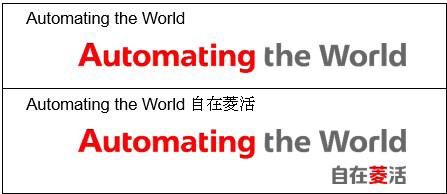
https://emea.mitsubishielectric.com
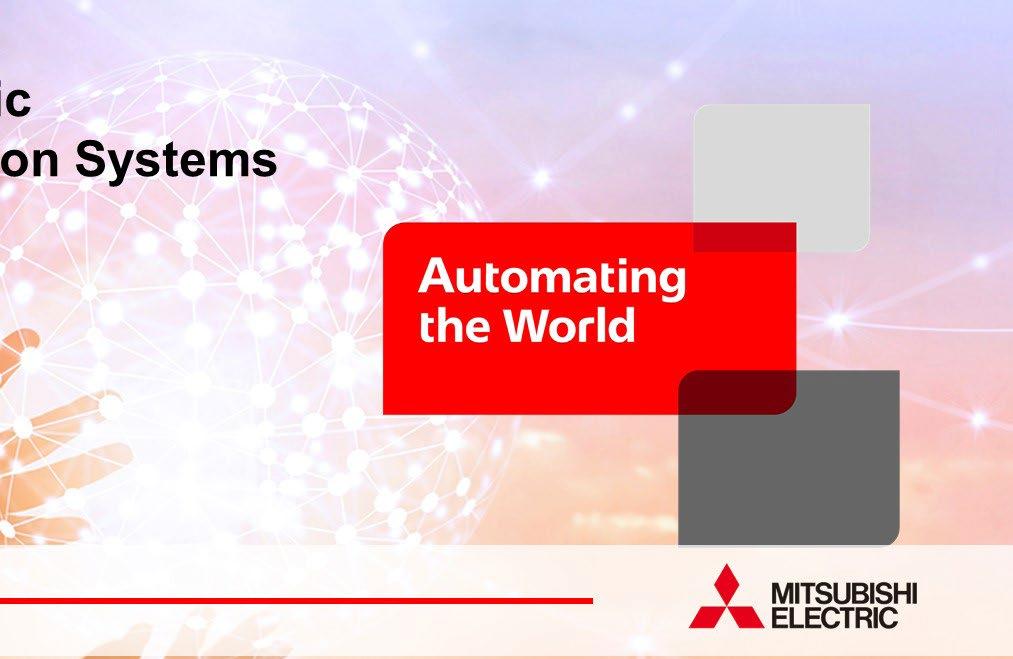

Leading temporary power and temperature control company, Aggreko has announced its new One Europe strategy with a view to better supporting companies decarbonise through the energy transition, as well as addressing more immediate concerns to reduce fuel usage and costs.
Leading temporary power and temperature control company, Aggreko has announced its new One Europe strategy with a view to better supporting companies decarbonise through the energy transition, as well as addressing more immediate concerns to reduce fuel usage and costs.
At the helm of the restructure is newly appointed Nicolas Protais, Managing Director Europe, previously Managing Director of Continental Europe of nine years.
As industry strives towards a low-carbon future, Aggreko is already helping many companies to adapt effectively. Nicolas brings a wealth of expertise from previous roles which enables acute understanding of the challenges customers across Europe are facing and how best to compete.
Over the coming months, Aggreko will be continuing to help grow demand for low-carbon power and energy solutions which are already helping companies to lower fuel usage, environmental impact and reduce energy costs. New technologies such as Aggreko’s Stage V generators, hybrids and load on demand solutions have already proved successful in the UK and will continue to be invested in across Europe.
According to Aggreko, this new structure is already enabling them to help customers future-proof against forthcoming challenges via cross-geographical leaning. It is also seeing an increase in the uptake of decentralised energy solutions, where customers can generate their own, cleaner energy, with bespoke packages that can also provide more reliable power, as well as sending surplus energy back to the grid. As such, Energy as a Service (EaaS) contracts also appear to be becoming a more popular way of achieving this as it removes the barriers of high upfront capital investment.
Nicolas says: “I am excited to be leading this transformation in my new role as Managing Director for Europe, to build a low-carbon business over the coming decade. We have already come such a long way in the past few years, and our continued investment into innovations like Stage V generators, hybrids and commitment to a 100% switch to HVO are central to this.
“In order to create a ‘One Europe’ structure, I will leverage my international experience to ensure the merger of these successful two business units combine to be more than the sum of their parts. For me, partnership, communication, and collaboration are key to success, and these are qualities that are built into Aggreko. Our strength is in our people, and across Europe we have a deep pool of experience, relationships, and innovative solutions which I plan to leverage to the benefit our customers. With a shared vision and values, we are now better placed to share our technical capabilities without geographical barriers.”
www.aggreko.com

German Water Partnership e.V. is the only network in the internationally oriented German water sector and unites over 300 companies. The course for the future was set at its 18th General Assembly held in July 2022 in Berlin. Alexandra Ervenich, Corporate Account Manager Water at Mitsubishi Electric, was one of the members elected to sit on the GWP board for the next four years (2022-2026).
The topics of “Water. Climate. Change.” also dominated the network’s traditional annual conference held on 6 July 2022. Due to the reorientation of climate policy, the German water industry is increasingly dealing with the problems of climate change, sustainability, digitalisation and the resulting need for innovation.
A podium discussion and various workshop sessions gave the attendees the opportunity to network with each other as well as with representatives from the worlds of politics, business and science. Alexandra Ervenich: “Topics like reliability of supply, protection of resources and energy efficiency are currently the focus of our attention and are promoted by the GWP. In this, the latest digital technologies will make a significant contribution to climate and water protection.”
As a global player in the field of automation technology, Mitsubishi Electric has a long history of success in providing energy-efficient and sector-specific solutions for the water industry. In-house AI supports intelligent maintenance concepts, complex data analytics and process monitoring, thus making an important contribution to the achievement of climate targets.
The new board of GWP
The new board of German Water Partnership is made up of the following members:
• Dr. Michael Beckereit (Deutsche Wasser International GmbH)
• Axel Böcker (Dorsch International Consultants GmbH)
• Dipl.-Ing. (FH) Michael Drechsler (UFT Umwelt- und FluidTechnik GmbH)
• Eckard Eberle (elected in absentia, Siemens)
• Alexandra Ervenich (Mitsubishi Electric Europe B.V.)
• Prof. Dr.-Ing. Sven-Uwe Geißen (Technical University of Berlin)
• Ingo Hannemann (Hamburg Wasser)
• Georg Huber (HUBER SE)
• Michael Kersting (Hermann Sewerin GmbH)
• Dr. Michael Kuhn (Kuhn GmbH)
• Dr.-Ing. Shahrooz Mohajeri (inter 3 Institute for Resource Management)

• Dipl.-Chem.-Ing. Anja Rach (Enexio Water Technologies)
• Gunda Röstel (Gelsenwasser AG and Stadtentwässerung Dresden GmbH, chair of the board of GWP)
• Dr.-Ing. Gerd Sagawe (Dr. Weber & Partner GmbH)
• Dr.-Ing. Ursula Schließmann (Fraunhofer Institute for Interfacial Engineering and Biotechnology (IGB))
https://germanwaterpartnership.de
Innodisk has started developing strategy focusing on the AI market, and also launched the “Innodisk AI” Solution at a press conference in Taipei, Taiwan. Innodisk has amassed more than 1,000 successful cases worldwide since the business expand to AIoT in 2017. In the coming years Innodisk will expand its focus on AI development with subsidiaries, as well as its partners Intel, NVIDIA, Microsoft and ASUS IoT.
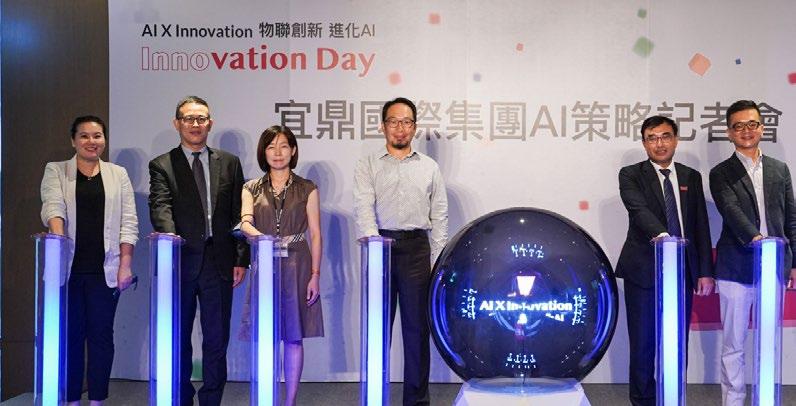
According to market research, the global AI market is anticipated to reach US$500 billion by 2023, and the demand for AI computing power is anticipated to increase by ten times before 2025. As AI gradually develops into a crucial infrastructure for growth and decision-making, it will become a major focus of future global technology development.
Innodisk is now aggressively expanding into the Edge AI market with three core strengths: absolute integration, application insight, and AI empowerment. These strengths will act as the core foundations to push Innodisk forward in the AI field.
At the press conference, Innodisk proposed a comprehensive artificial intelligence architecture, combining the data flow from cloud to edge, and integrating software and hardware technologies with heterogeneous platforms to drive industry intelligence innovation.
In recent years, Innodisk has spearheaded over 1,000 smart application projects. The company’s in-depth understanding of global industry trends and end-user application needs is its greatest advantage in facing market challenges.
Johnny Wu, Director of Innodisk’s Intelligent Peripheral Application division pointed out that “All AI development derives from the application requirements of the end user. When the application calls for it, it is necessary to collect, store and utilize high-speed and efficient data. Doing so lays out an important foundation for artificial intelligence. Ultimately, the road to further analysing and deducing huge amounts of data to achieve truly intelligent AI applications depends on the support of computing technology.”
The foundation of Innodisk’s technologies has always been data. In order to provide a comprehensive technical framework in data collection, transmission, computing, storage, and learning, the company is continuously empowering products with AI. The business has continued to introduce ground-breaking products like InnoAGE, InnoOSR, and InnoBTS.

Now, Innodisk has further formed alliances with international manufacturers such as ASUS IoT, Microsoft, Intel, and NVIDIA to expand technical collaboration, integrate various heterogeneous platforms and AI computing technologies, and create a new Innodisk AI Solution. With innovative AI architecture, integrated remote management, support from third-party software vendors (ISVs), OS operating platforms and Innodisk’s software and hardware solutions, customers are able to integrate AI solutions quickly and effectively.
Innodisk Chairman Randy Chien said “Innodisk AI not only provides more possibilities for future AI applications, but also accelerates the implementation of intelligent applications in vertical markets. We will actively create AI solutions for applications such as smart city, smart retail, industrial intelligent automation and smart medical.”
https://www.innodisk.com/index
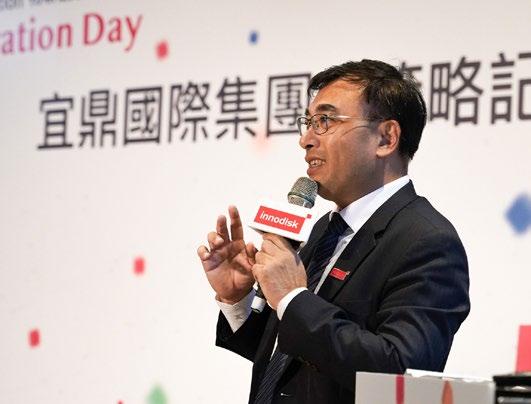
New partnership agreement helps to move Europe closer to large-scale battery cell production. “Industry and government both agree on the need to establish battery cell production in Europe. It

essential to meet demand and establish production independence for the EU trading bloc.” Roald De Meyer, Co-Founder at Novali.
The signed memorandum of understanding between Belgium based battery company Novali and industrial automation solution supplier Mitsubishi Electric Europe B.V. demonstrates quite how soon that agreement may be realized.
Novali was set-up to finance and deliver multiple “giga factories” across Europe, with production scheduled to start in 2025. In order to meet these deadlines Novali has signed a technology partnership agreement with Mitsubishi Electric Europe.

“The relationship will encompass fast deployment of existing automation solutions for battery cell production, and then collaboration to build the value chain for the next generation of batteries manufactured in Europe.” Klaus Petersen, Director Lithium Battery Industry EMEA, Mitsubishi Electric Europe BV.
Mitsubishi Electric has long term experience in supplying automation solutions in the lithium cell manufacturing industry in Asia, and a well-established customer base of machine builders in Europe. While the value chain in Europe still needs to be built up, the partners aim at creating a network of local machine builders capable of delivering a complete cell manufacturing line at gigawatt hour (GWh) scale. The focus will be on building best in class cells while avoiding wastage within the process, something that has so far been a challenge in the sector.
“Lithium battery cell manufacturing is a relatively new field in Europe that is being built-up quickly. Any lessons already learned by our partners that we can take advantage of can help us to reach start of production (SOP) quicker. Scalingup a factory to GWh capacity is ambitious and Novali sees this as an opportunity to build up a local value chain. That is why this project is so important in our opinion as the whole European electrification initiative will profit from that.” Thomas De Clippeleer, Co-founder.
The company also believes that its mission goes beyond commercial necessities and extends to the general challenge of sustainability. The target is to achieve CO2
is
neutral manufacture of batteries. One of the key aspects is reducing consumption of energy and raw materials, which is also why a high-level of factory automation is required. The cell manufacturing process itself is challenging and Mitsubishi Electric’s automation solutions have already proven how well they can manage this task, setting high production quality standards while still prioritizing energy efficiency.
Big plans and the benefits of being agile “Novali provides a platform for scaling up manufacturing of next generation battery technology. On the one hand we partner up with technology companies that are frontrunners in their respective field, and on the other hand we work together with automotive and industrial partners like Mitsubishi Electric for developing the supply chain and bringing the batteries into mass production.
As a startup, we are agile and able to quickly set up collaborations with technology companies. This allows us to jointly offer automotive vehicle OEMs flexibility and a future-proof mix of different technologies.

We plan to manufacture four generations of battery cells. Lithium iron phosphate (LiFePO) or (LFP) cells for lowcost market segments, state-of-the-art nickel manganese cobalt (NMC) cells transitioning to high voltage cathodes and silicon anodes for mid-market segments. Solid state or lithium metal batteries we predict will enter the market at a premium.
Another important aspect is that the batteries should be available at a high volume. This requires record investments in cell manufacturing and the downstream supply chain. We are working together with global investment funds and
industrial partners setting up joint ventures with automotive companies to achieve this. Manufacturing equipment and general factory automation is a crucial element in the supply chain. Mitsubishi Electric has decades of experience supplying automation products to all the incumbent cell and equipment manufacturers in Asia. The goal of this alliance is to tap into this expertise for establishing a local ecosystem of European manufacturers.” Roald De Meyer.

Novali is a cell manufacturing company serving the mobility and energy storage markets. We offer technology companies a platform for scaling next-generation battery technology. Our mission is to contribute to the realization of the energy transition by increasing the energy and power densities and reducing the cost of batteries. We believe batteries should be manufactured CO2 neutral, relying on local supply chains and recycled materials. We also believe that industry should serve the general wellbeing of people and find it important that Novali, as a direct employer and indirectly through the employees of our suppliers and through the local communities we impact, serves this purpose.
www.novali.energy
https://emea.mitsubishielectric.com/en/
The PathDetect™ function of the compact Easy VIS spectrophotometer produced by METTLER TOLEDO recognizes which path length is measured and reduces errors.
Ease of use in a new dimension: Closing the lid of the Easy VIS spectrophotometer produced by METTLER TOLEDO automatically starts the measurement.

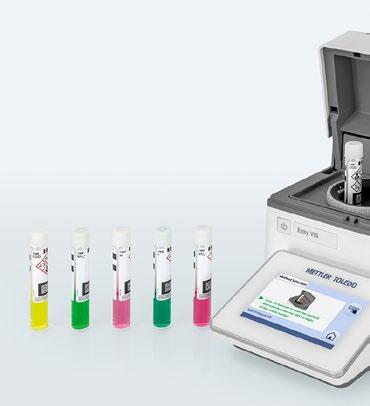
The new instrument analyzes liquid, translucent samples for their optical spectrum, color, and water parameters. Or any of the three. Operators speed up their processes and improve the quality of the results using Easy VIS by Mettler Toledo. They, therefore, save money, time, and space.
The instrument takes over the measuring tasks of up to three instruments: a colorimeter, a spectrophotometer, and special measuring methods for water testing, such as titration. All this power rests in one instrument about the size of a notebook. The results appear on screen in trustworthy accuracy, precision, and repeatability – within seconds. That saves money, time, and space. The instrument’s name is Easy VIS, one of the nextgeneration EasyPlus UV/VIS spectrophotometers produced by METTLER TOLEDO.
A typical place for Easy VIS is the QC lab at small manufacturers in the food and beverage industry, environmental testing labs, or any industry needing quality control and supervising their process- or wastewaters. The Easy VIS is used during multiple steps of the production process: For inspection of raw materials, quality control of semi-finished and finished products, or testing the water quality of wastewater. This streamlines the production processes considerably. Those who used to send their samples to an external laboratory profit even more, as they can now analyze most samples independently at an internal cost.
The visual user interface with workflow guidance allows you to simply scan and measure. Even untrained staff can operate Easy VIS intuitively. This increases the integrity and repeatability of the analysis and saves training time.
Easy VIS operates within a wavelength range of 330 to 1,000 nm. The light source is an easy-to-replace tungsten lamp, which any operator can replace within no time.
The partner device, Easy UV, covers the full UV/Vis spectrum with a wavelength range from 190 to 1,000 nm to cover additional applications in the UV range. Plus: The Easy UV runs with a power-saving and maintenance-free xenonflash lamp.
Analytic precision in three fields of expertise
25 standard-compliant color scales in the visible range come pre-installed and can easily be used. Some examples are ICUMSA™ for sugar color, ESBC for beer quality analysis, or OIV CIELab for wine color determination. The results reveal the quality of the product within seconds.
Water analysis shows, for example, the concentration of Aluminum, Ozone, Chlorine, or Polyphenol. This reveals whether the water is fit for human consumption or can be used in further production. Is the wastewater safe to release? With its numerous built-in water testing methods, the spectrophotometer can quickly provide the answer.
For spectrophotometry, the sample is analyzed at the wavelengths where the sample has its characteristic absorption of light. The Easy VIS measures the transmitted or absorbed light and the reading reveals the sample’s concentration or purity.

The testing procedure is very simple: One cuvette holds the blank measurement, and another is prepared with the sample. After choosing the desired analysis method, the cuvette is placed in the cuvette holder. The PathDetect™ function recognizes which path length is measured. Closing the lid automatically starts the blank measurement. (By the
way, the blank measurement is stored for seven days. So, this step can be neglected during the rest of the week unless the measurement parameters change). After determining the blank, the sample cuvette is brought into the measuring position. The measurement starts again automatically after closing the lid. Within seconds, the results show up on the screen. Now Easy VIS is free to analyze other samples or to start a different analysis method. With the EasyDirect™ software, these results may be automatically saved or exported to an external storage device or exchanged with a data management system (e.g., LIMS).
Easy VIS has the potential to replace up to three other instruments, performing color measurement, water analysis, and spectrophotometry. It does so with trusted accuracy and precision – within several steps of the production process. All this saves money, time, and space. Check with your local METTLER TOLEDO representative about how unique the price performance is!

METTLER TOLEDO’s new EasyPlus instrument line embraces the Easy VIS and Easy UV spectrophotometer. Both instruments offer equal benefits to their operators in accuracy, speed, and compactness. They differ in two aspects: wavelength range and light source. The Easy UV is of special interest to those working within the UV range from 190 to 1,000 nm. Its xenon-flash lamp is maintenancefree and requires no changing.
https://www.mt.com/gb/en/home.html
DFI, the world’s leading brand in embedded motherboards and industrial computers, was invited to participate in “AMD Datacenter Solutions Day” in September.
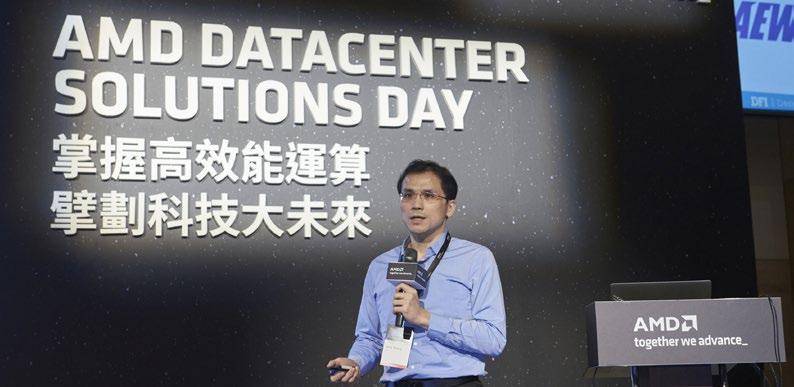
Based on the theme of high-performance computing (HPC). As the first in the world to launch the smallest industrial motherboard equipped with AMD products, DFI partnered with its subsidiary, AEWIN, to present their star products and share how ultra-small products can help the trend of software virtualization technologies in the forum. We hope to optimize the development of diverse services in IoT applications.
AMD invited industry giants to the event to discuss the future of high-performance computing and conduct in-depth discussions with their partners related to high-performance computing, cloud computing, and AI. DFI was a speaker in the digital learning AI session during the event. We shared our views on software-defined IoT and explained the role of ultra-small products in the application environment.
DFI stated that as cloud services continue to develop, the mainstream technology of modern data centers, containerization, has been extended to IoT edge devices and has driven the integration of edge computing workloads. Ultra-small products can create several virtual platforms and integrate applications through the software. In addition to optimizing operations, it can also reduce the cost of connecting to the cloud and improve yield and efficiency.
Due to the high-performance computing power of AMD CPUs, the DFI ultra-small products on display in the booth, GHF51 and EC90A-GH fan-less embedded systems, and the AEWIN SCB-1937C edge server, designed for intelligent applications, can reduce infrastructure requirements and optimize existing resources. They can also provide a highly flexible and scalable platform to meet different workload needs, simplifying the complexities of industrial automation.
Factory automation, in-vehicle applications, and smart healthcare are the three main focuses of DFI. Under the wave of new infrastructure projects, DFI will collaborate with IoT and automation partners to help companies overcome the challenges of virtualization, containerization, microservices, edge computing, hybrid cloud management, heterogeneous IT environments, and artificial intelligence. DFI hopes to become “the best partner for corporate intelligent OT” and will continue to innovate and develop innovative technologies with AMD for the future of highperformance computing. We will enhance software virtualization technologies through ultra-small products to meet corporate needs.
https://www.dfi.com/
Cubtek Inc. is using network analyzers from Rohde & Schwarz in the development of 4D imaging radar for RF measurement of the E-band. Rohde & Schwarz oscilloscopes and their independently developed, application-specific integrated circuits (ASIC) provide the best measurement tools for automotive radar research and development.
Future self-driving vehicles will face complex road scenarios and 4D imaging radar sensor modules in the 77 GHz band will be indispensable. Compared with LiDAR, 4D imaging radar is less susceptible to inclement weather conditions and is more in line with safety requirements for self-driving vehicles.
4D imaging radar covers distance, speed, horizontal angle and vertical angle. Most current conventional radar systems either lack vertical angle detection or have very limited sensor capabilities for vertical angles. Relative to conventional systems, 4D imaging radar has achieved a breakthrough in horizontal and vertical angular resolution, with angular resolution of nearly 1 degree and 0.1 degree of angular accuracy.
4D imaging radar has far more antenna channels than conventional systems, which significantly enhances performance. Conventional radar systems usually have a 3-transmitter/4-receiver antenna architecture but 4D imaging radars can have a transceiver volume that is several times greater. As 4D imaging radar systems require more 77GHz millimeterwave antennas and transceiver chip integrations, their millimeterwave antenna, IC adapter design, and millimeterwave test validation will play an extremely critical role.
77GHz automotive millimeterwave radar manufacturer Cubtek Inc. partnered with NXP Semiconductors, the world’s
leading automotive radar chip manufacturer, to launch a 4D imaging radar platform at the CES last January. The NXP imaging radar chipset solution uses the flagship S32R45 radar MPU and the second generation high performance RFCMOS radar transceiver TEF82XX for 12 transmitting and 16 receiving 77GHz antenna channels that can be expanded to 192 virtual antenna arrays using MIMO technology. 4D imaging radar performance is improved by optimizing the high-resolution algorithms with angular resolution of less than 1 degree.
When developing the 4D imaging radar, Cubtek chose the R&S ZVA40 network analyzer and the R&S ZVA-Z90 millimeterwave converter from Rohde & Schwarz to make RF measurements of the E-band. The instruments provide both high performance and highlyaccurate measurement results in sensitive, high frequency environments.
Rohde & Schwarz digital oscilloscopes include the portable R&S RTH series, the mid-range R&S MXO4 and the high-end R&S RTO6 or R&S RTP series. The latter can analyze the demodulation bandwidth of FMCW signals. The company developed the ASIC itself for low noise and high performance, creating the best measurement tool for automotive radar research and development.
https://www.rohde-schwarz.com

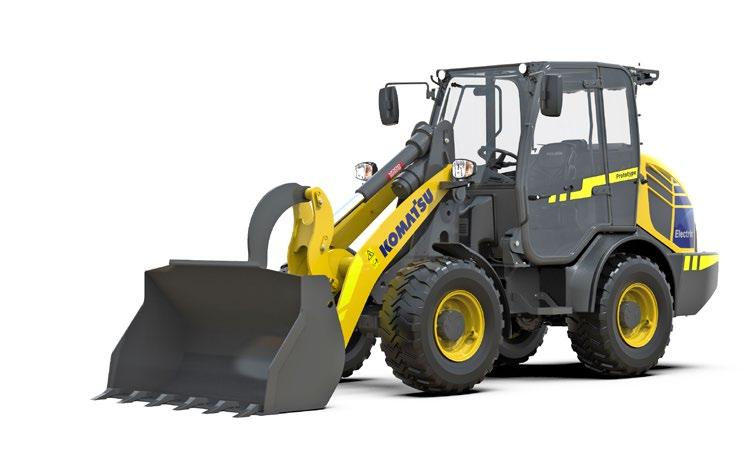
Komatsu revealed a prototype for its first fully electric compact wheel loader showcased on its demo area at the bauma 2022 international fair in Munich.
Recently designed and built together with Moog Inc., the worldwide designer, manufacturer, and integrator of precision control components and systems, this new connected and automation-ready construction machine is battery-powered and zero-emissions and is now ready for joint testing.
Moog’s Intelligent electric system includes an electric traction motor, lift, tilt and steering electric cylinders, power electronics, system control computer, battery, and battery management system. The integrated control system connects and coordinates the actions across the machine, while the all-electric actuators and motors provide the force to the machine’s traction and loading system. The integrated nature of the system enables industry-leading system efficiency and controllability.
“To achieve our CO2 emission reduction targets from products in use of 50% by 2030 from 2010 levels, to achieve carbon neutrality by the end of 2050, we are looking for promising technologies from suppliers to accelerate our electric machine development,” said Seiichi Fuchita, Chief Technology Officer (CTO) and President of Development Division at Komatsu. “The machine built together with Moog combines the strengths of both companies and was finalized within a short period of time and we expect the joint testing will show the advantages of a full electric machine and will proof collaboration is beneficial for both sides.”
Both companies plan to jointly test the fully electric loader after bauma to prove that it can achieve a new level of efficiency, operating time, and comfort. The companies joint test will show that the machine’s operating cycle is extended, and, with innovative assist functions, that it provides a “fatigue-proof” and comfortable environment for the operator to manage the machine and his day.
The prototype’s intelligent machine electrification system is designed to be connected and automation-ready. The system has the sensing and control capabilities needed for automation while the integrated software framework comes with built-in tools to coordinate multiple axes of motion and precisely control torque, velocity, position, and force.
www.komatsu.eu
More than 80 employees in 35 different countries, ensuring a strong relationship with main local media. Mepax distinguishes itself through its extensive media knowledge and ability to select the best international online/print advertising options. PR can be translated into 35 languages.
40,000 published articles in 2020: EMEA: 48% - Asia: 31% - Americas: 21%. Most of the articles are published in the top 1000 media worldwide.
With a proven process set for more than 200 active customers, we can adapt to all specific client needs with the highest reliability. We have developed in house the most advanced PR dedicated ERP, enabling transparency and real-time full online reporting. International media management is then made easy, fast, and efficient for optimal results.
www.mepax.com info@mepax.com

EU Stage V compliant - Excellent manoeuvrability and travel performance. Visit Komatsu at bauma 2022 in hall C6 and on the outdoor demo ground FM713/1.
Komatsu Europe’s HD785-8 Rigid Dump Truck will be presented on the demo ground at bauma 2022. Designed, developed, and manufactured based on 100 years Komatsu experience and know-how, the HD7858 delivers the highest levels of safety, performance, operator comfort and productivity.
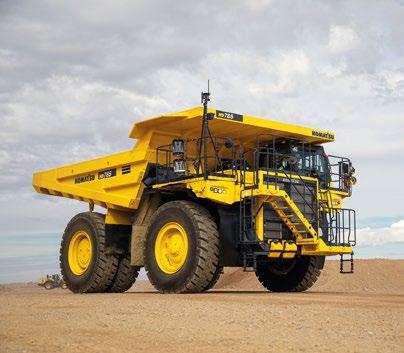

“The HD785-8 proposes excellent operator comfort, great travel performance and the well-known Komatsu reliability of the previous model” says Juuso Ahola, Product Manager at Komatsu Europe. “This machine is such a pleasure to operate that you just might want to keep the keys at the end of your shift rather than hand them over to the next operator.”
Safety & First-class operator comfort Safety is Komatsu’s number one priority. The HD785-8 is equipped with LED lights, ground level battery, starter and machine lockout disconnect switches. A newly designed stairway provides safe access to the cabin.
For improved safety, Komatsu KomVision is standard: it creates a real-time 360-degree bird’s-eye view on the cab monitor and eliminates any blind spots on the rear and sides of the machine.
Operator comfort on the HD785-8 includes a new ergonomically designed cab, with a convenient control layout and a comfortable environment for more confident work and greater productivity.
The new fabric-covered, air suspension seat is adjustable to the operator’s weight and height and includes a seat heater and a ventilator as standard.
Thanks to a low noise engine, large capacity viscous cab mountings, hydro-pneumatic suspension and independent strut type suspension on the front wheels, in-cab noise levels are kept at 72 dBA.
Radiator cleaning becomes easy thanks to the hydraulic radiator fan with reverse mode. The ground level jump start receptacle and service centre with fast fill coupler for engine, transmission, brake oil & coolant refills further facilitates easy and safe maintenance. For safety at height, technicians can attach lanyards to tie-off points (ISO 14567) well-placed around the HD785-8.
• EU Stage V emissions compliant – peace of mind.
• With front step ladder
• Komatsu Traction Control System (KTCS) – maximised productivity

• Energy saving operation – optimised efficiency.
• New, ergonomically designed operator cab – improved operator comfort
• Heated & ventilated air suspension seat – improved operator comfort
• Service centre with fuel, oil & coolant fast fill connection (Wiggins) – maximum uptime, maximum productivity, maximise profit
• KomVision surround view, with radar - for industry leading safety – Peace of Mind
• Engine secondary and emergency shut down switches –safety, peace of mind
• Full LED lighting system - safety, peace of mind
• KOMTRAX Step 5 – ultimate asset management
• Updated KOMTRAX-Plus – convenient machine follow-up & data management
• Komatsu CARE – peace of mind www.komatsu.eu
Wednesday 28th September marked the beginning of the celebrations attended by representatives from local institutions, and continued with a Family Day on Sunday 2nd October. The Lecce plant manufactures CASE machines – wheel loaders, graders, backhoe loaders and compact wheel loaders – which are distributed worldwide.
The CASE plant in Lecce, Italy, celebrates 50 years in the business. Celebrations began on Wednesday 28th September with the planting of an olive tree, a symbol of the Salento region and of the company’s roots in the area.
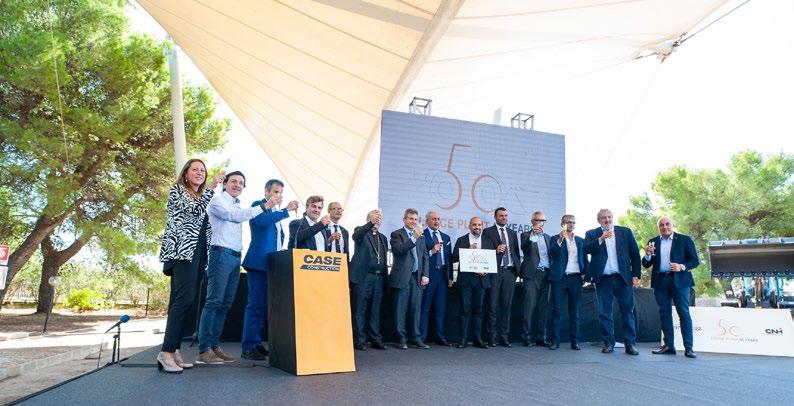
Local authorities attended to express their commitment to this industry that has been contributing to the economy of the area for half a century. Among them were Apulia Region President Michele Emiliano, the region’s councillor for economic development Alessandro Delli Noci and the president of the regional council Loredana Capone. Angelo Corallo, Professor at the Department of Innovation Engineering at the University of Salento - a university that has a long-standing partnership with the plant - was also in attendance.
Federico Bullo, Head of Europe for CNH Industrial Construction businesses, recalled the hub’s history, which is made up of challenges, continuity in following tradition, teamwork, skills, dedication and commitment. He thanked those who light the “engines” of the plant every day: the employees, the team. A team and an organisation that not even the global supply chain crisis has been able to challenge, considering that 2022 has been a record year in terms of production. Mr. Bullo went on to say, “CASE has always believed and believes in the development of this plant; that is why we have boosted investment in technology, facilities, training, occupational safety and ongoing innovation”.
Innovation has been carried forward by the excellence of the R&D centre which all along has been focused on reducing its carbon footprint and increasing clean energy. Concrete measures have been achieved, namely, the Lecce plant has been equipped with photovoltaic solar panels and will soon have its coating plant replaced with a powdercoating plant, with lower emissions, waterless and zero volatile compounds. Therefore, the end product quality
will improve, thanks to a longer-lasting finish that better withstands the sun’s rays.
“Together, we will continue to address the new challenges related to the 2030 Agenda, carbon footprint reduction and circular economy, by ensuring decent work, the guarantee of labor rights and the development of social dialogue. And we shall do so together because the Lecce hub is and remains key to CASE”, wraps-up Federico Bullo.
After the Institutional Day, the Family Day Celebrations continued on Sunday 2nd October, gathering the hub’s 800 employee’s families. A brief introductory speech by the plant manager Massimiliano Casaburi launched the day. He was proud to share the plaque received from CASE’s European management with all employees; a team that has always distinguished itself for its dedication and enthusiasm, as well as for the excellent results achieved, even in recent years despite the pandemic and geopolitical and energy crises.

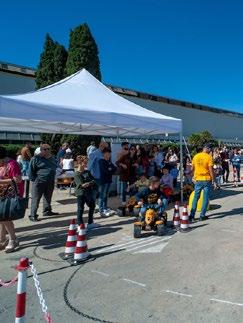

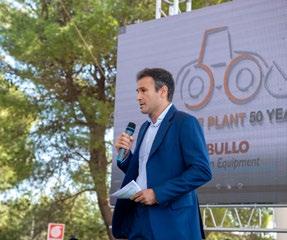
More than 1,500 people attended the Family Day. To mark the occasion, the industrial plant was converted into a big party venue for all employees, featuring children’s games, inflatables and a raffle with prizes, in addition to live music by an exclusive band, made up exclusively of plant employees. Exceptional attractions: CASE’s construction equipmentwheel loaders, backhoe loaders, compact wheel loaders and graders - displayed on the forecourt and in the proving
ground, where they starred in operating virtuosities capable of entertaining an audience of all ages.
For the occasion, the facility and its departments were “open doors”: excellent guides - the former plant employee association showed attendees where CASE produces 4 lines of machines in 64 models and 3400 configurations.
A special day to reminisce an important anniversary, which the brand celebrated with the people who, thanks to their passion and enthusiasm, for the past fifty years have continued to come up with ideas, develop insights and manufacture products that make this plant one of CASE’s excellences worldwide.
https://www.casece.com
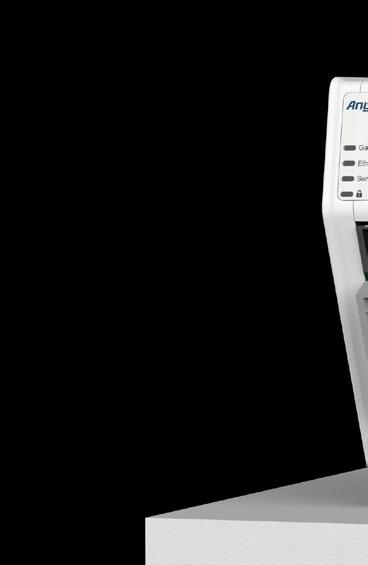
New Anybus® Communicator™ gateways enable fast and simple communication between industrial networks for improved operational performance.
HMS Networks now expands its second-generation Anybus Communicator range of high-performance gateways, enabling more and faster data to be transferred across networks in industrial applications. Thirteen new versions for data connectivity between EtherCAT, EtherNet/IP, Modbus TCP, PROFIBUS, and PROFINET make it simple for users to connect between different control systems, remove automation islands and maximize operational performance.
The award-winning Anybus NP40 industrial network processor ensures that the Communicators meet demanding requirements in terms of industrial performance, reliability, and security. Featuring new hardware and software, the gateways enable instant data transfer – up to 10 times faster than their predecessors. Users can also exchange significantly more data between the networks as the gateways transfer up to 1 500 bytes to and from connected PLCs.
Built using carefully selected industrial components and verified against the CE and UL industry standards, the gateways are designed to handle harsh industrial environments.
To protect users from cyberattacks, the gateways have an onboard physical security switch that prevents unauthorized configuration changes and secure boot functionality to resist attacks and infections from malware.
Fast installation and configuration procedures are guaranteed thanks to an optimized housing design, an intuitive GUI, and easy-to-understand documentation.
Installation is simplified thanks to the compact gateway design with forward-facing ports and DIN-rail mounting, which enables gateway installation close to connected devices, reducing the amount of needed wiring.

Users can configure the gateways using drag-and-drop functionality in the web-based GUI, which is accessible via a dedicated Ethernet port on the gateways. In the GUI, users can also monitor network traffic and diagnose issues before they become problems.
Hands-on assistance is also available, as a QR code in the GUI provides a step-by-step installation and configuration guide.
“We are very excited to release these Communicators, our most advanced range of gateways,” explains Fredrik Brynolf, Product Manager for Anybus gateways at HMS Networks. “The Communicators are reliable, powerful, and secure. On top of this, they offer a new level of userfriendliness thanks to the optimized design and the intuitive GUI. All this makes the Communicators excellent choices for anyone looking to connect data between industrial networks. The Communicators make it simple to connect
PLCs, remove automation islands, and maximize operational performance.”
Anybus Communicators are available off the shelf as stand-alone ready-to-install units. Users can personalize the Communicators to meet OEM and brand labeling requirements. The gateways can also be pre-configured and locked to be used as tightly integrated communication components of an automation device or a machine.
https://www.anybus.com/products/gateway-index/ anybus-communicator
Electro Rent outlines how companies can combat the impacts of the current economic challenges and mitigate risks set out in several recent reports from prominent industry commentators. In light of current economic conditions predicted by numerous recent reports, electronic test equipment specialist Electro Rent has advice for any companies looking to mitigate this financial pressure when sourcing the equipment they need.
The argument in favour of test equipment rental is already compelling and growing in favour across the industry spectrum, but in uncertain economic times, there arises even more need to replace legacy-based purchasing strategies with a smarter way forward.
With economic headwinds driven by factors such as higher costs, inflation and geopolitical uncertainty, the EU’s recent forecast report outlines the potential impact on new investment: “Heightened uncertainty around the unfolding of the geopolitical situation and its impact on the demand outlook are set to weigh on companies’ investment decisions and delay the realisation of investment plans.”
A May 2022report by Deloitte Insights already warned that “the negative effect is particularly pronounced for companies’ operating margins, which are under pressure from a higher cost base due to rising energy and commodity prices”. In June 2022, the OECD’s Economic Outlook said that growth is set to be markedly weaker than expected in almost all economies. Many of the hardest-hit countries are in Europe, which is highly exposed to current market challenges, including the impacts of the energy crisis and inflation. All of this could impact on accessing the electronic test equipment that companies require, on time and on budget.
More and more companies are therefore turning to rental test equipment as a cost-effective yet reliable means of meeting the requirements of budget-conscious, lead-time restricted projects. Renting not only provides immediate access to the latest test equipment technologies from all major brands, but it also keeps projects on track and avoids the typical risks associated with capital expenditure, such as

a large hit to balance sheet liquidity, asset depreciation and slow return-on-investment. Renting also allows companies to easily ramp up and down in line with demand. Moreover, those renting can change their test equipment whenever necessary, providing the flexibility to support an everevolving industrial and economic landscape.
Electro Rent has extensive experience in advising customers on solutions that help them navigate different financial situations in a safe and effective way. Based on over half a century of managing test equipment investments - amid a broad spread of economic trading conditions - the company knows how to supply this equipment in a flexible manner, minimising the potential consequences of an economic downturn and keeping test schedules going without the need for capital investment.
“The key is maintaining business agility and ensuring sufficient flexibility to deal with fluctuating economic conditions,” explains George Acris, Vice President Marketing EMEA at Electro Rent. “High-end electronic test equipment is available that many are not even aware can be procured on a rental basis. For example, by using Electro Rent, customers can deploy the latest spectrum or network analyser for a high-frequency test just for the period required. No more, no less.”
Companies can achieve this ambition simply by paying as they go from their operating budget. As a point of note,
it is possible to rent equipment of this type for periods as short as one week. Moreover, the equipment is available immediately, which is a huge advantage in the current climate of long lead times, avoiding any frustrating project delays that can derail product launch dates.
“Many companies in defence and electronic goods development, as well as those in telecom installation and maintenance, for example, are already using this concept effectively and saving an average of 25% on their equipment costs while being able to deploy as needed,” says Acris. “This strategy is a proven way of keeping pace with the latest test equipment technologies, retaining total flexibility to adapt and react in line with economic uncertainty.”

Evidence is building from expert commentators that economic challenges continue to lay ahead for some time to come, so now has never been a better time for companies to look again at how they procure equipment. Electro Rent has some very effective options available to help mitigate any challenges that the economy may present moving forward.
https://www.electrorent.com/uk/services/lease-andfinance
With the FBPS 600i, only one device is needed for safe position detection. In the past, system manufacturers had to use two sensors and two different technologies for position detection. But not anymore: The new FBPS 600i safety bar code positioning system from Leuze enables position detection with a single sensor.
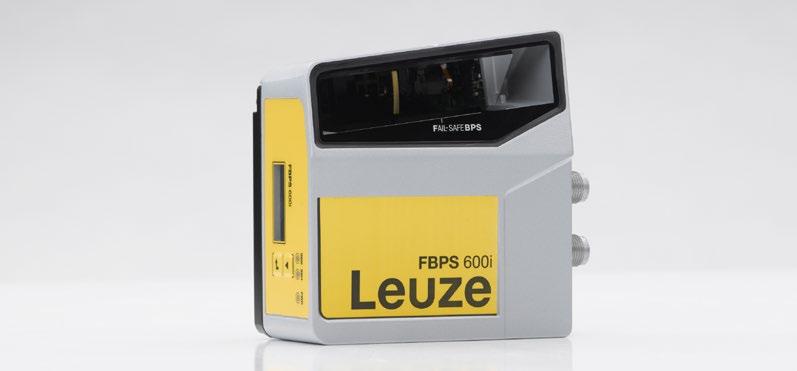
In intralogistics, it is important that the stacker cranes and transverse transfer cars pose no danger to the staff. The position and speed must be monitored during maintenance work or when operating with a manned car. Until now, system manufacturers had to use a redundant setup with two sensors in order to meet performance level d. This problem is now solved with the new single-sensor safety bar code positioning system FBPS 600i, which already meets the requirements of performance level e. This means that safety functions can now be easily implemented. The unit is connected to a safe connection unit, for example, a frequency inverter, via two SSI interfaces. The FBPS 600i also requires less space in the system, and the installation effort is reduced significantly.
The FBPS 600i has an impressive error reaction time of only ten milliseconds. This makes it especially suitable for position detection when quick movements are involved. Important parameters, such as the speed curves and the throughput can be optimized as a result. The sensor’s large working range of 50–170 millimeters also enables flexible integration in different types of systems.
The new safety bar code positioning system is installed on the stacker crane or transverse transfer car. A bar code tape is affixed on the opposite rack. In the development of the FBPS 600i, the Sensor People emphasized maximum reliability: With every scanning pass, the FBPS 600i reads multiple codes of the tape, from which the software determines highly precise position values.
The sensor scans the code at various locations through the diagonal path of the scanning beam and the movement of the transfer car. This prevents reading errors caused by local soiling or damage. The self-adhesive bar code tape, which was optimized for industrial application, also facilitates flawless operation: It is UV resistant, extremely resilient, and mechanically durable. In addition, the printed position values are easy to read and simplify handling.
The well-thought-out fastening concept with a quickchange system ensures simple mounting of the FBPS 600i devices. The device can be safely secured with an easy-toaccess screw on the mounting clamp. This saves time during assembly.
https://www.leuze.com/en-uk
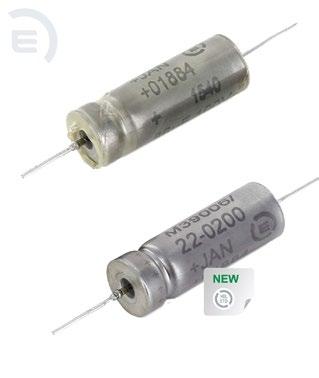
TO THE AMERICAN STANDARD MIL-PRF-39006
Exxelia, global manufacturer of complex passive components and subsystems for harsh environments, is expanding its line of MIL-PRF-39006/22 & MIL-PRF-39006/25 tantalum capacitors, with the support of the reliability level R.
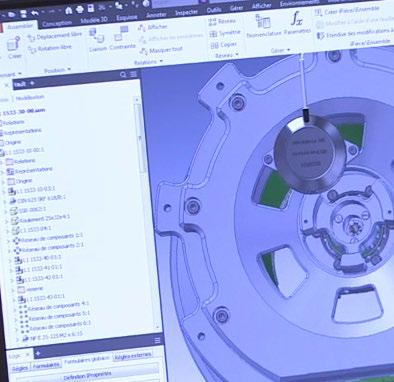
Exxelia now offers the reliability level R, in addition to level M and P for the specifications MIL-PRF-39006/22 & MIL-PRF-39006/25, equivalent to CLR79 and CLR81 series. Available in all package sizes (T1 to T4), these fully sealed products cover voltages from 6 V to 125 V, deliver capacitance values ranging from 1.7 µF to 1200 µF, and are designed to operate at temperatures ranging from -55 °C to +125 °C and withstand the harshest environmental conditions. Performance highlights over solid tantalum capacitors include higher energy density, higher ripple currents, lower ESR and lower DC leakage current.
Engineers with complex design requirements looking for a product that can be easily integrated into projects such as power supplies & converters or filtering units for the aerospace and defense industries will be pleased. MIL 39006/22 & MIL 39006/25 Level R are now available for order with a lead time of 14 weeks.
“The introduction of these new ranges builds on our decades of experience in supplying high reliability capacitors to the military market and demonstrates Exxelia’s ability to meet the most demanding specifications in terms of product development” says Jerome Tabourel, Exxelia’s vice president of sales and marketing. “We are proud to be one of the few MIL qualified tantalum capacitor manufacturers, and our flexibility and advantageous lead times will bring new supply opportunities.”
• Capacitance from 1.7 μF to 1,200 μF
• Voltage from 6 V to 125 V
• Operating temperature -55 °C to +125 °C
• Very good shock and vibration resistance (option H available)
Download the complete datasheet www.exxelia.com
Amphenol SOCAPEX’s MPO Field solution enables users to transform a standard MPO patchcord into a robust connector designed to resist the harshest environments.
The MPO patchcord is integrated into a metallic plug based on MIL-STD-38999 Series III, shell size 13 Military connector, to protect it from shocks, dust and fluids. There is no requirement for field termination.
MPO Field TV connector combines high speed and high density of well-known MPO/MTP Fiber Optic connectors using MT ferules, with high resistance of MIL-DTL-38999 Series III Military shells for various harsh environment applications such as high speed embedded network backbones for battleships, armored vehicles or airplanes and trains, datacenters in harsh environments, trackside measuring & inspection systems for trains, high resolution real time video, passenger entertainment...
MPO Field connectors feature:
High Density and Speed - Take advantage of the High Data Rates and Optical density offered through the use standard Fiber Optic MT Ferrules
High Density and Robustness
- The 12 or 24 fiber channels are integrated into 28 mm diameter 38999 metal shells, with tri thread coupling mechanism
- The solution is IP68 sealed when mated and shocks & vibration resistant
Easy to implement
- No tool or field cabling are required. The solution allows anyone to transform a standard MPO Patch cord or more complex assembly into an harsh environment connector very easily.
Check out our assembly video: https://youtu.be/WkmZGr4MrxA
“This is a great new product range to bring under the Amphenol SOCAPEX product offering in order to respond better to the needs of the market. The MPO Field TV solutions range enlarges our core offering and further defines our footprint in fiber optics applications.” comments Emmanuel Lambert, Amphenol SOCAPEX Fiber Optics Product Manager.
https://www.amphenol-socapex.com/en/products/ connectors/fiber-optics/mpo-mtp-field

We are pleased to introduce the Gas Laser with highly advanced laser technology designed to detect natural gas with the aim of enhancing safety and improving detection for fire services, and first responders.

Frequently fire personnel and first responders are called to natural gas emergencies using equipment that puts them close to potentially dangerous structures. The Gas Laser supports remote detection allowing the operator to work at a safer distance from the hazard location. When access to a property cannot be established, the Gas Laser can operate through glass, giving the user an audible and visual indication to the presence of methane. This quick scan permits fire personnel and first responders to make rapid decisions and establish control of the gas and ignition sources should a gas escape be detected.
• Quickly scan common venting points from a safe distance
• Detection distance 30 m (100 ft)
• 8 hours run-time

• Highly visible, sunshine resistant guide laser equipped for location accuracy
• Graphical interface for easy user interpretation
• Color camera with Bluetooth, WIFI, and datalogging onboard
• Certified Intrinsically Safe to Class I, Division 2, Group D, T4
Discover this new solution: our video & our website
To provide manufacturers versatility and high value, Seco has launched its new X-Head quickchange replaceable milling head system. With the system, users can quickly and easily change between various solid-carbide milling geometries and types to optimize milling operations while reducing manufacturing costs and tooling inventories.

Fast and easy tool changes with the turn of a wrench Milling heads mount to a variety of available shank lengths for even greater versatility, with short and long-reach capability for a variety of overhang lengths. Head changes only require a simple turn of a wrench, eliminating the need to remove the holder from the machine to change the cutter. Users also eliminate the need to reset tool lengths thanks to a secure and reliable connection that provides exchange accuracies within 50 microns.
One tool mills it all According to Gary Meyers, Seco Product Manager Solid Milling, shops must often purchase many different endmills and holders to machine different features on a workpiece which adds higher cost to a project. “The Seco X-Head quickchange replaceable milling head system adapts to various machining needs with a range of geometries and types but without additional holders,” he said.
With 194 types of available cutting heads, users can choose between different cutters for multiple operations as well as between specific high-performance, versatile highperformance and universal type geometries. Seco also offers metric and inch products for heads and shanks.
www.secotools.com
To allow manufacturers
customer demand for lower part prices, the new Seco Helical SN813 milling system features double-sided helix inserts with eight cutting edges that significantly lower cost per edge to boost slotting, side milling and circular rough milling efficiency.
Built for difficult applications involving ISO P, M, K and S materials, the cutters offer application-specific subfamily designs featuring left or right-hand helixes, half- or full-effective teeth options, two front insert and many radii choices for long tool life and maximum chip evacuation. Reliable and user-friendly, the Helical SN8-13 also eliminates incorrect indexing of front and helix inserts, reducing operator error.
“The demand for price reductions is ongoing and forces shops to economize production operations wherever possible while still maintaining part quality and profit margins,” explained Benoît Patriarca, Global Product Manager Helical Milling at Seco Tools. “With the Helical SN813 system’s design combined with high performance insert geometries and grades, they can achieve all these goals with one tool.”
Perfect insert indexing Incorrectly indexed inserts can lead to machine downtime, quality issues and scrap. To eliminate the risk of mistakes, the SN8-13 milling system cutters are specifically designed to make mounting of front and helix inserts easy and foolproof, especially for inexperienced operators.
As an economical alternative to milling products for depthsof-cut from 50 mm up to 100 mm (inch range from 2” up to 3”), Seco offers the Helical SN8-13 in a range of subfamilies built with its SN13 helix inserts.
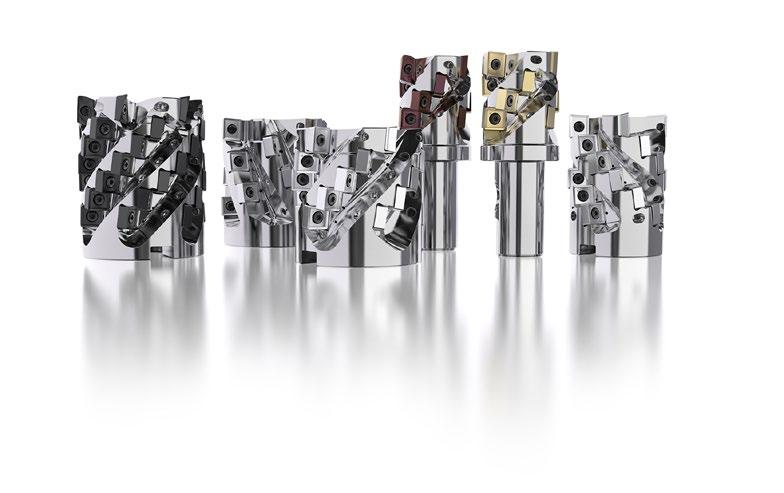
Those subfamilies include:
• R217/220.82: XO16 lead insert for standard use
• R217/220.82-H: AC15 lead insert for heavy duty applications
• R217/220.81: AC15 lead insert for low power situations
• R217/220.81-K: AC15 lead insert for weak fixturing situations
The range is designed with arbor style connections that match most standard holders as well as Seco Weldon, Weldon and Capto interfaces.
www.secotools.com/milling
to meet
With the utmost employee safety, health and wellbeing in mind, Seco Tools has initiated a far-reaching safety strategy that involves both yearly and long-term goals extending out to the year 2030. With this long-term planning and continuous improvement approach, the company will significantly lower lost time injury frequency rates as compared to results achieved through typical industry safety programs that focus solely on yearly achievements.
Typical injuries in the manufacturing environment are often those involving hands and fingers, and these injuries can happen to everyone from facilities personnel to machine operators. For its safety strategy, Seco set the long-term goals of lost time injury frequency rate (LTIFR) at 1.1 by 2022 and 0.8 by 2030. Its total recordable injury frequency rate (TRIFR) goal is 2.0 for 2022 and 1.6 or lower for 2030.
An umbrella approach to safety Seco began planning its safety program last year, taking an umbrella approach. In doing so, the company focuses on analytics and evaluates not only where key performance indicators (KPIs) such as workplace hazards, injury frequency rates and the like lag, but also where leading indicators relate to the correlation between activities and results.
The Seco umbrella approach is a company-wide global strategy and one in which Seco establishes targets and objectives and communicates those to all its local sites. This ensures that all sites have access to the necessary data for them to conduct proper assessments then identify and close any existing gaps.
For its long-term strategy, Seco adopted the incident reporting tool EHS360 to delve deeper into causes of safety issues and how they are investigated. To accomplish that,

the biggest change in that system is a reduction from 130 root and immediate incident causes to 15 causal factors. The company also added a “5 Why” approach to the system that more accurately identifies root causes, which in some instances are not a single cause, but multiple causes.
In slimming down the causes, Seco is able to group them for more accurate analysis – tracking these causes over a longer period of time to identify potential trends and improve investigative results. Seco can then take the proper actions to correct the causes and minimize the risk of the same or similar incident happening again in the future.
“When you are working to improve safety, one year is too short. Effective analysis takes a lot of time, so we need more time to analyze the data, to target the gaps we find, to create collaboration and to improve,” explained Lowe Hjort, SMS Health & Safety Specialist at Seco Tools. “When it comes to safety, a company always need to have a long-time vision. That’s why we introduced not only yearly goals, but longterm goals as well.”
Employee safety is an ongoing commitment at Seco where the company continues to adapt to changing conditions and to identify solutions and activities to address and improve these varying conditions. The ultimate goal is a safer workplace, which the company will achieve through

collaboration and the sharing of knowledge as well as setting and achieving ambitious safety goals.
www.secotools.com
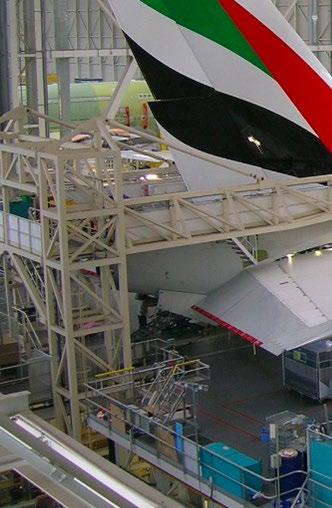
As the aerospace industry returns to full health following a period of low activity, several sector-specific challenges are encouraging a growing number of OEMs and supply manufacturers to adopt a different approach in specifying their test and measurement equipment. Taking advantage of rental and other financial solutions is providing a highly cost-effective, flexible and low-risk way to overcome the constraints and expense associated with acquiring test equipment, not to mention other undesirable factors such as equipment depreciation and obsolescence.
Companies operating in the aerospace sector need to keep on pushing the performance envelope, while also providing the reliability levels expected in mission-critical applications. Comprehensive testing is therefore essential, so getting the approach right is paramount. However, implementing any new test equipment investment strategy must take place against a rapidly evolving industry backdrop.
Looking ahead over the next few years, the global aerospace testing arena is expected to bounce back strongly, at least according to market research consultancy Lucintel, which predicts that the market will reach annual revenues of $5.3 billion by 2025. The demand for military aircraft, for example, is currently buoyant. Among numerous areas currently undergoing exploration are new frequency bands (between 30 and 40GHz) for radar and communication purposes, plus a greater emphasis on the use of unmanned aerial vehicles (UAVs).
In commercial air travel, the greatest impetus relates to reducing carbon emissions. Other trends include the distribution of wireless-enabled IoT nodes throughout the engine and fuselage for the continuous monitoring of key parameters. These nodes allow the introduction
of predictive maintenance strategies, making it possible to replace component parts before there is any danger of failure, thereby ensuring ongoing safety.
Simultaneously, there seems to be a great deal of scope for smaller firms in relation to private planes. One area where interest is growing is electrically propelled aircraft, which will call for advanced battery management and detailed powertrain analysis. Due to the increasing integration of electronic content, more in-depth EMI testing procedures will also be required. If companies are going to address these emerging market opportunities at pace, there is a need to formulate more responsive test equipment sourcing strategies that facilitate quick adaption to ever-changing dynamics.
Following the disruption caused by the Covid-19 pandemic, the aerospace sector is racing back to full throttle, with companies keen to capitalise on the opportunities ahead. Flight services are ramping up again and passenger numbers increasing dramatically, all of which is happening at pace. In line with demand, OEMs are once more upgrading their aircraft build schedules. Associated test and measurement programmes are getting back to full capacity, with many companies looking at what has changed since early 2020 and reflecting on how this will impact their test equipment investment decisions.
Arguably the most pressing challenge for aerospace companies at present in terms of test and measurement is ever-increasing lead-times for purchasing equipment. The need to react quickly to contract opportunities and get on board with fast-moving projects set against short deadlines means that the long lead time associated with purchasing new test equipment –many months being the current norm – is not a practical solution. In contrast, rental test equipment is generally available off-the-shelf, helping aerospace companies to optimise their test operations, break down barriers and get to market faster. Furthermore, leading suppliers in this market take a consultative approach to understand the test equipment needs of the aerospace industry and, if required, quickly tailor technical solutions that meet specific requirements.
Some aerospace projects, particularly at present, involve a temporary ramp-up of production. Ongoing world events are currently driving the military aircraft sector, for instance, but these build programmes could ramp down as quickly as they ramp up if situations change. Again, opting for a rental test equipment solution provides flexibility without the risk that large capital purchases bring. Rental terms can be from as short as a week to many months or longer with a regular fixed rental payment agreed in advance so there are no additional costs. This eliminates the often hidden costs associated with equipment purchase, such as maintenance, calibration, logistics and financing costs. These rental terms
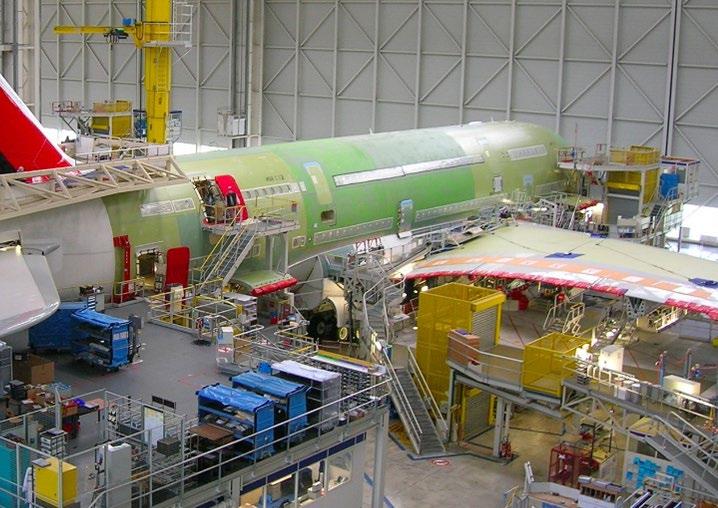
are fully flexible, with options to extend, upgrade, change or end the rental at any time.
The best test equipment rental equipment suppliers consistently invest in their inventories so they can offer access to best-in-class test instruments from all major brands, providing a single source that simplifies procurement for aerospace companies. Moreover, those renting can change their test equipment whenever necessary, providing the flexibility to support an ever-evolving aerospace landscape.
Put simply, within the aerospace industry there is a heightened need to invest in R&D to stay ahead of the competition, but this must not present financial risk. Careful management of investment strategies is therefore essential. With the right mix of procurement solutions, including rental, companies can preserve Capex by shifting to an Opex model while ensuring they have the testing capability to drive innovation and growth. Importantly, leading suppliers of rental solutions have a deep understanding of test equipment life cycles and utilisation and can offer comprehensive solutions that lower the overall cost of test.
Across all industries, another issue is the rising costs associated with testing, so companies need to maintain control of investment levels. Ingenuity is required to minimise both capital and operational expenditure. This presents a further reason why increasing numbers of aerospace companies are moving from the costly and inflexible practice of procuring new test equipment, to a more versatile and economically viable methodology
based on rental or the acquisition of top-quality pre-owned equipment.
In so doing, companies can better align with the need for greater technological versatility, ensuring their readiness for scenarios such as the arrival of new standards. This strategy also supports faster turnaround times, while respecting the current imposition of acute budgetary constraints. Furthermore, aerospace companies can future-proof their operations against any unforeseen problems ahead, with the agility necessary to make quick adjustments.
For these reasons, companies in the aerospace sector are now looking for multifaceted support on test equipment sourcing, covering both their engineering and logistical requirements. This demand has led to Electro Rent becoming the leading test equipment solution provider to many of the industry’s major manufacturers and upcoming enterprises. By using Electro Rent, customers can attend to their wireless communication, GNSS positioning, EMI conformance, and radar and powertrain test requirements, in the most convenient and cost-effective manner.
The extensive portfolio of test equipment stocked by Electro Rent includes a wide variety of items that are highly applicable for aerospace testing procedures. Within the range are relevant models from all the leading vendors, including Keysight, Rohde & Schwarz, Anritsu and Tektronix. Electro Rent can also assist with inventory management, so that test equipment assets are utilised with the highest degree of efficiency, redundant items are identified (so they can be sold) and unnecessary purchases are avoided.
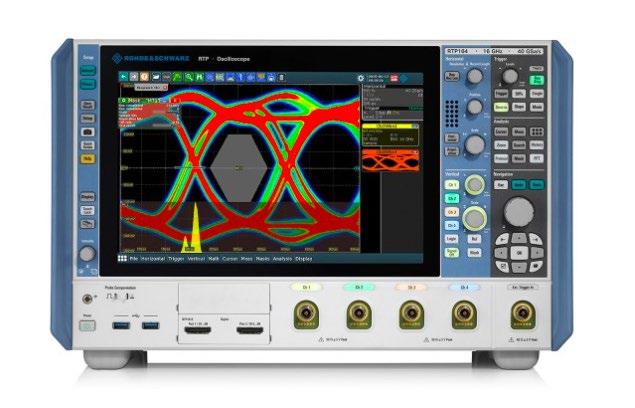
The aerospace industry is fast recovering from what has been an unprecedented and difficult period in its history. The time is now right for associated companies to reevaluate their test policies, ensuring they have the resilience needed to deal with all future scenarios and avoid sourcing decisions that later prove costly.
Faced with an increasingly competitive landscape, both large-scale companies and SMEs in this sector must keep pace with advances in testing to ensure that any newly developed hardware complies with the latest standards and protocols. With the ramp-up in commercial aircraft manufacturing, many aerospace companies are looking to expand and grasp new opportunities. However, wary of the risks that come with major investment in test equipment, a mix of rental and other financial solutions can optimise budgets and provide the required levels of flexibility to meet the challenges and opportunities ahead. Here, partnering with a recognised expert in test equipment sourcing, supply and inventory management represents a prudent way forward.
By Peter Spillman, Global Vice President of Product Strategy, Electro Rent.https://www.electrorent.com

Fuzzy Logic, with its Repplix software module, allows a robotic system to learn trajectories in a single gesture and without any specific training. With the help of a portable learning device, an operator can transfer their professional know-how to the robot by simply executing their task. The task can then be repeated as many times as needed in total security.

Since 1987, Caire’s teams have been assisting factories in the creation of special machines. They are experts in mechanics and automation master servo-controls, computer science, industrial vision and robotics. With their partner STI, they integrate numerous processes, including the application of products such as paint or varnish.
David Mangin, Business Manager at Caire, explains: “Currently, the vast majority of product application lines that we create or modify are manual lines that our customers want to robotize. However, programming a robot for small series production activities with great diversity involves many trajectories, which is time-consuming and requires the intervention of a highly qualified roboticist. This difficulty, coupled with the scarcity of skilled painters, hinders their robotization.
Caire’s rare customers who do use robots on their product application lines also face programming difficulties. Faced with the number and diversity of parts to be processed, they create “approximate” or rough trajectories that cover all the parts to be processed. Some of these trajectories are then reprogrammed for greater precision, which requires several weeks of work by the roboticists. Despite these adjustments, the trajectories do not always match the parts completely. This then requires complex air flow and product flow adjustments. Each adjustment requires the production equipment to be stopped.
Controlling a robot without programming, a unique software solution Repplix solves this problem by eliminating robot programming and allowing the operator to create his own trajectories with millimeter precision.
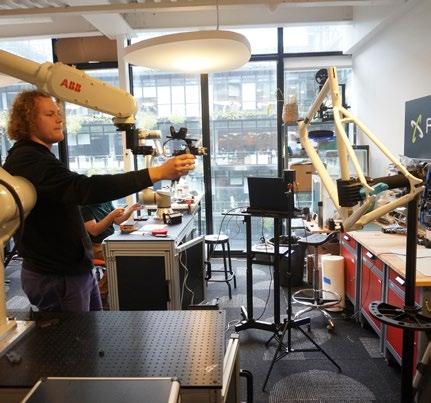
Ryan Lober, CEO of Fuzzy Logic, explains: “With the Repplix software module, developed by Fuzzy Logic, it is easy to robotize where it was previously impossible. The robot becomes a precision tool in the hands of the operator and
allows him to automate his task autonomously, without any intervention from a specialist.

Repplix works in a simple way: a portable teaching device, handled by an operator, teaches the software a trajectory. The software Fuzzy Studio provides a monitoring system via a real-time digital twin of the robotic installation, and takes into account collision monitoring and the feasibility of the trajectories in the robot’s environment. Furthermore, alerts are set up to warn the operator on the fly. The trajectory capture associates several process parameters such as the trigger pull of the gun and its flow rate. The operator, who isn’t a robotics expert, can then modify the trajectory and process parameters via the graphical interface, even after the trajectory has been taught.
Then, using Fuzzy Studio, the cycle is launched and the robot executes the application exactly as it was demonstrated by the operator. The speed at which the robot moves is set directly in the software and can be modified from the learning speed. The cycle is performed autonomously by the robot, without the need for operator supervision. The operation is repeated in a few minutes for each new series of parts to be processed. Another advantage is that the module can be used immediately, without any real training being required.
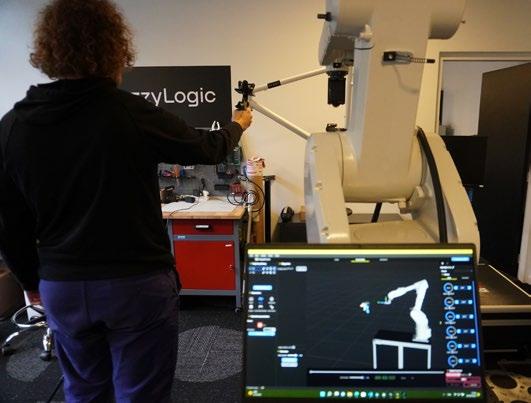
David Mangin adds: “While Repplix takes control of the robot and pilots it on the fly, we are working with Fuzzy Logic on securing the process and interfacing Repplix with the safety PLCa integrated into the system. Our roboticists have started to define exchange tables to control external actions via Repplix, such as the triggering of cylinders,
motors, application guns and flow regulators, etc. This safety aspect is designed within a normative framework.”
Ryan Lober concludes: “Allowing expert painters to show a robot how to execute an application changes the whole game. The expert passes on their know-how intuitively to a robot that takes care of repeating it. The robot allows the expert to multiply his or her productivity and allows the factory to imagine new manufacturing processes. This is what we call Automation Independence.”
Three projects in collaboration with Caire are set to be deployed in the near future with a major aerospace player. Repplix will be used for product application on parts with high production variability. The line is scheduled to be installed in September 2023.
www.flr.io
How MB Sentinel Locks out theft with Southco. Founded in 2017, MB Sentinel (MB) is a manufacturer of mailbox and package delivery boxes for residential and commercial buildings. MB fills the need in the marketplace for consumers to have a secure space to receive delivered packages at their homes.
With options for single family homes, apartments and HOA (homeowner association), buildings, as well as for commercial use, MB’s secure parcel boxes make it easy and convenient for couriers to lock and unlock their mailboxes, simply by adding a lock code to the customers’ delivery address information on their shipment.

MB Sentinel is a manufacturer of mailbox and package delivery boxes for residential and commercial buildings. MB’s offerings include parcel box solutions for curbside and driveway, in-fence and column integrations, multi-family and HOA, and wall inserts. MB Sentinel also offers customers the ability to customize security features of their mailbox to find the right solution that works for them, and allows for future security upgrades.
MB’s postal box solutions hit the market at just the right time. With ecommerce growing over 32% in the US in 2020 alone, the need for a secure parcel drop box solution is higher
than ever. With this robust growth in ecommerce comes the rise in packages being left at buyers’ doorsteps, making them vulnerable to damage or theft. In fact, according to a survey by C+R Research, nearly half of respondents reported receiving a delivery at home every week, with 43% reporting themselves as a victim of package theft.
Utilizing a secure parcel box ensures peace of mind for consumers who are waiting for their online purchases to safely arrive at their residences and places of business. While designing their patented postal boxes, MB knew they needed a high quality locking solution to ensure their boxes were not only secure but also resistant to vandalism and corrosion in outdoor environments. They also needed a reliable supplier with the manufacturing capabilities to scale these solutions for growth.
By partnering with Southco, MB was able to fulfil all of their access hardware needs with one supplier. Southco provided mechanical locking options and electronic locking upgrades, as well as an ergonomic hinge solution that makes the parcel box door feel more substantial for the end user.
Southco’s R4-EM Electronic Rotary Latch is integrated into the front delivery door of all MB’s models and is connected
to an electronic keypad, which actuates the latch to open the door. Depending on security and delivery requirements, the R4-EM can also be used on the rear door of the enclosure. For example, when a model is integrated into a structure like a fence, a second keypad and latch combination allows the homeowner or renter access from the rear of the enclosure.
The electronic latch can also be installed on the rear doors of free standing enclosures with separate letter trays and package compartments. In this application, only the homeowner can access both compartments from the rear door by entering a unique access code into an access controller connected to that electronic latch. The front door can be equipped with a secondary lock code that only allows package carriers to access to the lower parcel compartment, while the postal carriers can still deliver letter mail as usual.
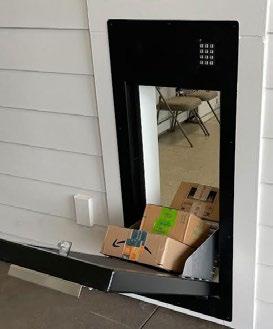

Southco’s Electronic Access Solutions (EAS), like the R4EM Electronic Rotary Latch combine Southco’s proven engineered mechanical locks and latches with electronic actuation, providing enhanced security and remote controlled and monitored access. In case of a power outage, the R4-EM can be installed with a mechanical override, which allows the user to open the door manually. MB Sentinel chose Southco’s E5 Cam Latch and PT Lock Plug for their exterior doors as mechanical override options.
When choosing a mechanical solution for securing the rear door on full cabinet wall insert placements, MB chose the A7 Compression Latch, which provides a weather-tight seal from the elements and keeps intruders from having access from the front door located on the outside of a home or business. The heavy-duty, lever-style action provided by Southco’s A7 series provides door-closing leverage for heavier gasketed door applications through a combination of strength, ease of installation and simplicity of operation.
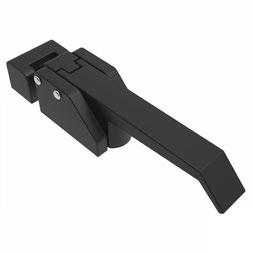
All MB Sentinel Package Delivery Systems are equipped with Southco’s E6 Constant Torque Position Control Hinge. The E6 series features integrated constant torque, which allows for constant resistance throughout the entire range of motion. As a result, users are able to easily position parcel box doors and hold them securely at any desired angle – fully opened, fully closed or anywhere in between.
Business at MB Sentinel is growing and customers appreciate the quality of their products. MB has been awarded two patents and their mailboxes have earned recognition in the industry, winning a 2021 Star Award from The Texas Association of Builders (TAB).
With growing demand for their secure parcel boxes, MB has recently opened distribution-to-builder segment through Acme Brick, a Berkshire Hathaway company, to now offer immediate access to homebuilders to purchase their solutions.
Partnering with Southco helped MB Sentinel offer a high quality locking solution with ability to customize security options. Southco’s extensive manufacturing capabilities and operational excellence, also makes them the perfect partner to scale business with MB’s projections for future growth.
Says Jeff Kutas, Founder, MV Sentinel: “People already believe that our Mailbox and Box Sentinel parcels safes are the best. Using Southco hardware gives me the confidence to agree with them.”
https://mbsentinel.com/ www.southco.com
Faster than any other IDS industrial camera: uEye Warp10 with 10GigE.

With high speed to new spheres! When fast-moving scenes need to be captured in all their details, a high-performance transmission interface is essential in addition to the right sensor. With uEye Warp10, IDS Imaging Development Systems GmbH is launching a new camera family that, thanks to 10GigE, transmits data in the Gigabit Ethernet-based network at a very high frame rate and virtually without delay. The first models with the IMX250 (5 MP), IMX253 (12 MP) and IMX255 (8.9 MP) sensors from the Sony Pregius series are now available.
Compared to 1GigE cameras, the uEye Warp10 models achieve up to 10 times the transmission bandwidth; they are also about twice as fast as cameras with USB 3.0 interfaces. The advantages become particularly apparent when scenes are to be captured, monitored and analysed in all details and without motion blur. Consequently, applications such as inspection applications on the production line with high clock speeds or image processing systems in sports analysis benefit from the fast data transfer.
The GigE Vision standard-compliant industrial cameras enable high-speed data transfer over cable lengths of up to 100 metres without repeaters or optical extenders via standard CAT6A cables (under 40 metres also CAT5E) with RJ45 connectors. The robust uEye Warp10 cameras are initially offered with C-mount lens holders. IDS is already working on additional models. In the future, versions with TFL mount (M35 x 0.75) will also be available for use with particularly high-resolution sensors up to 45 MP. The cameras are supported by the powerful IDS peak software development kit.
In the IDS Vision Channel, the experts from IDS present the features and possible applications of the new camera family in detail. The video is available here free of charge. All you need is a free IDS website user account.
https://en.ids-imaging.com/ueye-warp10.html
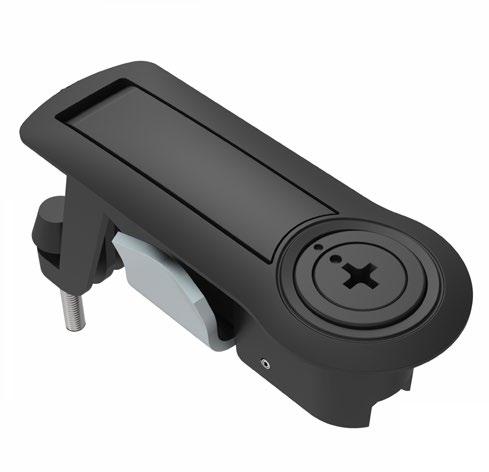
Southco has introduced the newest product in its successful C2 series of lever latches, with a new push to lock option that incorporates an auto-relock feature.
With customizable features, versatile locking styles and a streamlined industrial appearance, the push to lock C2 Lever Latch provides upgraded functionality that can be used to demonstrate compliance with industry regulations.
The push to lock C2 Lever Latch from Southco offers a new auto-relock feature to comply with industry regulations requiring a key to access equipment panels, such as ISO-TS 28923. With adjustable grip that overcomes manufacturing tolerances and prevents gasket setting, and multiple locking styles, the C2 series can be customized to fit a variety of applications. An integrated bumper helps to absorb vibration and noise, while preventing scratches to the panel frame. Additionally, the push to lock C2 Lever Latch has been redesigned with a more modern industrial appearance, providing a fresh option for manufacturers and design engineers.
According to Global Product Manager Jonathan Coulter, “The push to lock C2 Lever Latch is an exciting new addition to one of our most successful product classes. The latch offers an auto-relock function to comply with new regulations, and the product’s versatile functionality makes it an ideal choice for a wide variety of applications.”
www.southco.com
The Docklock AC zero-point clamping system in the hydraulic version for automated change-over.
The Docklock zero-point clamping system in use in a machining centre.
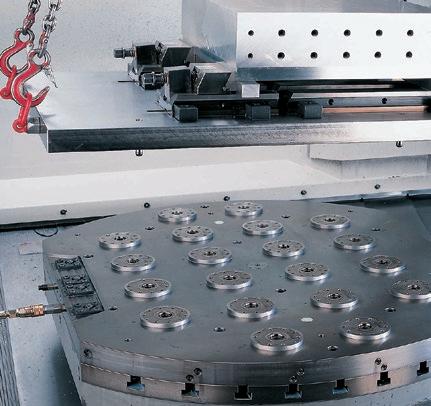
stationary systems, Hainbuch, the manufacturer of
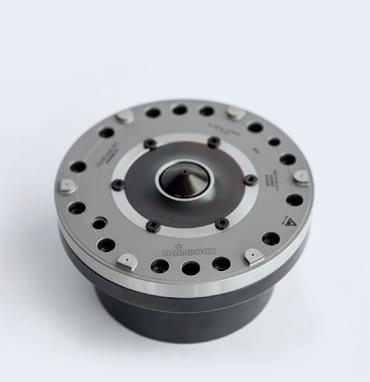
has acquired the Docklock zero-point clamping system from Vischer & Bolli AG in Switzerland.
The Docklock system has been on the market for more than 20 years and its reputation in the stationary workholding field has been long established. Its features and user benefits match perfectly with Hainbuch’s product philosophy. The products must be easy to use, process-optimizing, easy to set up, long-lasting and absolutely precise. Hainbuch has been offering quick change-over systems or zero-point clamping systems for lathes for many years, and now it is expanding its capabilities in the area of stationary systems. The four variants of the Docklock system now have Hainbuch branding. Both pneumatic and hydraulic variants are available for either manual or automated change-over.
A system that offers more than just quick
The Docklock zero-point clamping system has two decisive advantages over other systems. The first is the form fit clamping with a collet or clamping segments, ensuring stiff clamping and higher repeatability. This also means that there are no pressure marks on the clamping bolt compared to systems with balls or slides, which lead to inaccuracies and consequently the need to replace the clamping bolts. Secondly, it is impervious to dirt and swarf which means less wear and less maintenance. The base plate, which is screwed onto the machine table, provides the base for a quick change-over. The zero-point repeatability is ≤ 0.005 mm without alignment. The clamping device combined with the Docklock, can be changed over in two minutes. The zero-point clamping system thus produces enormous savings in terms of production time and cost. Using the interface, setup can be performed outside the machine, thus avoiding lost production. The collet chuck lock ensures trouble free insertion and removal of the workpiece pallets. Direct installation on machine tables, pallets or fixtures can be implemented cost-effectively by means of flanged cylinders. This is also significantly less expensive than a plate changer or a machine table change-over.
Options: Docklock quick change-over interface for stationary machining systems.

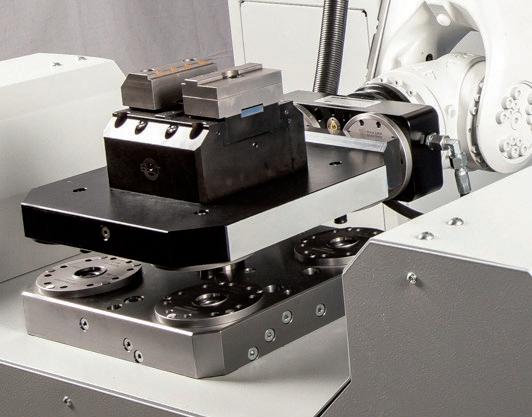
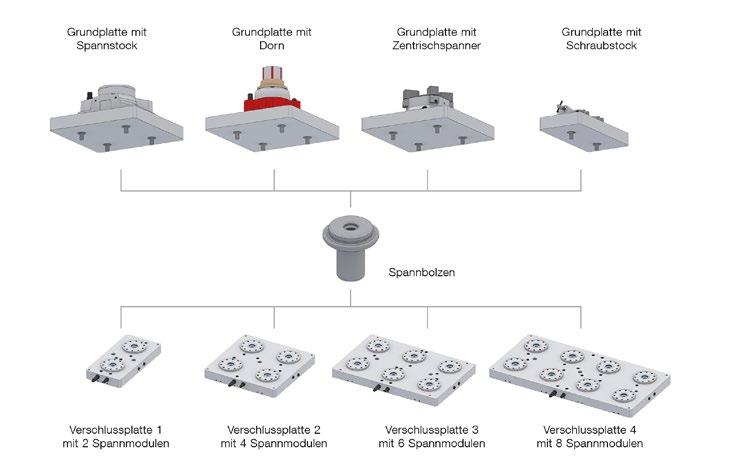
The form fit clamping and power transmission design features are identical to the Docklock for manual changeover. The same applies to the change-over time and zeropoint repeatability. In addition, an automatic shutter at the clamping point prevents ingress of dirt and swarf. This ensures even less wear and less maintenance. It also has as standard features, contact control, air-blast support islands and piston monitoring for a safe automated process.
https://www.hainbuch.com/en
At the recent i14y Lab Summit 2022 in Berlin, Rohde & Schwarz has showcased as one of the lab’s partners its proven and powerful measurement instruments used to verify the conformance of O-RAN Radio Units and the end-to-end network performance.

Rohde & Schwarz is providing its expertise in lab and field testing to the i14y Lab to help accelerate time to market of open network technology for the multivendor network of the future. The i14y Lab is an open lab for interoperability testing of disaggregated telco systems, such as Open RAN, operated by a consortium of strong partners, led by Deutsche Telekom and supported with funding from the German Ministry of Digital and Transport (BMDV).
The i14y Lab Summit 2022, held at the lab’s location in Berlin on June 9, 2022, offered guided tours through the lab, interactive sessions, roundtables and workshops with i14y Lab experts and an afternoon of keynotes and panel discussion featuring lab partners, industry players and the German Ministry. Rohde & Schwarz has contributed to the summit with a demo of O-RAN Radio Unit (O-RUs) conformance testing.
Network disaggregation as in O-RAN brings new challenges in terms of interoperability between the network equipment of dif¬ferent vendors. The evolving O-RAN radio units (ORU) need to conform with both 3GPP and O-RAN standards. Fronthaul conformance tests, defined by the O-RAN ALLIANCE, ensure that the evolving O-RUs are interoperable with the O-RAN distributed unit (O-DU).
The fronthaul test solution showcased at the i14y Lab Summit 2022 has been developed jointly by Rohde & Schwarz and VIAVI Solutions and includes:
• The R&S SMW200A vector signal generator, R&S FSVA3000 signal and spectrum analyzer and the R&S VSE signal analysis software from Rohde & Schwarz, to emulate a realworld radio environment by generating, capturing and analyzing RF signals, extended for O-RAN applications.
• The TM500 O-RU Tester from VIAVI, implementing the O-RAN Distributed Unit (O-DU) side of the M-plane and C/U-plane functionality necessary to configure the interface with the O-RU and exchange of I/Q data over the Open Fronthaul.
Rohde & Schwarz experts show their O-RAN test solutions at the i14y Lab Summit in Berlin. (Image: i14y Lab)
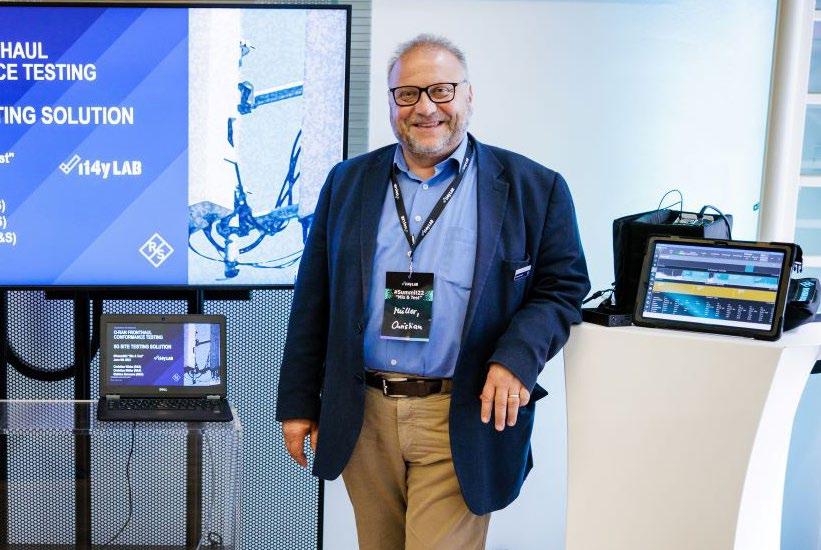
• The O-RU Test Manager application from VIAVI, providing a single point of control for the integrated system, simplifying testcase workflow while allowing deeper data inspection and analysis as needed.
In addition, Rohde & Schwarz also presented mobile network testing solutions, which are used to ensure the successful deployment of O-RAN networks, such as R&S 5G STS (Site Testing Solution) and QualiPoc Android. With these tools network owners perform passive and active measurements to analyze essential aspects of the end-toend network performance:
• Benchmarking O-RAN with single vendor RAN: The performance of open radio access networks can be compared with single vendor radio networks following ETSI harmonized methods.
• Measurement of network synchronization: Network synchronization is a potential source of interference in 5G TDD networks and needs to be verified also in O-RAN.
As a leader in test and measurement for mobile communications, Rohde & Schwarz supports the technical evolution with expertise and active participation in the O-RAN ALLIANCE to enable a globally harmonized market. With a wide portfolio ranging from component verification through fronthaul conformance to mobile network testing and benchmarking, Rohde & Schwarz helps to drive
development, certification, deployment and operation of Open RAN networks.
Alexander Pabst, Vice President Market Segment Wireless Communications at Rohde & Schwarz, says: “Disaggregation is one of the key ingredients of the evolution and convergence of networks. The i14y Lab has brought a collaboration space to Berlin that will strengthen Germany and Europe as a leading technology location. Innovation is deeply rooted in the DNA of Rohde & Schwarz. We have been instrumental to the success of wireless communication since its beginnings and we are happy to bring in our expertise here as well.”
For more information on the i14y Lab, visit www.i14y-lab.com
For more information on O-RAN testing solutions from Rohde & Schwarz, visit: www.rohde-schwarz.com/_255230.html
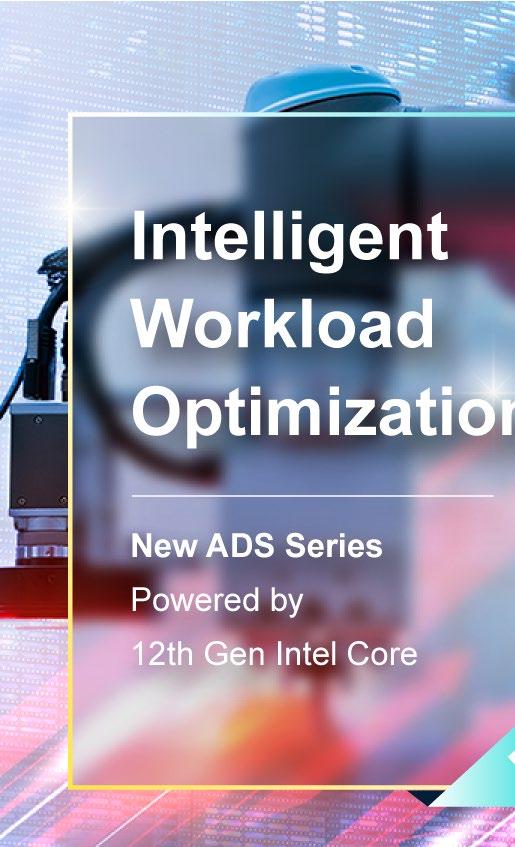
The new hybrid architecture combines the P-Core and E-Core for intelligent computing resource allocation to increase visual computing efficiency by 50%, significantly enhancing the performance and efficiency of automated production lines and graphic applications simultaneously.
The new-gen ADS Seriescomputing solutions are available with industrial motherboards and embedded systems, covering various form factors from SBC, Mini-ITX, microATX, ATX to fanless computers. These solutions are designed to meet the needs of industrial control, surveillance, traffic flow analysis and other vision computing at the edge.
Industrial Motherboard
3.5” SBC: S53-ADN
4” SBC: ADP253
Mini-ITX: ADS101/ADS103, ADP171/ADP173 microATX: ADS310-R680E/Q670E
ATX: ADS630-R680E/Q670E
Computer-on-module
COMe Compact: ADP968 COMe Mini: ADP9A2
HPC Embedded Systems
Fanless: EC500-ADS, EC510/EC511-ADS, EC543-ADS
Mini-ITX System: WM120-ADS
ATX Walk Mount: WM343-ADS
The Intel® Alder Lake processor-based ADS Series utilizes the all-new hybrid architecture of Performance Cores and Efficient Cores (P-core and E-core) to achieve highperformance computing with lower power consumption and intelligently make instant, optimal adjustments to workloads and workflows. With Deep Learning Boost (DL Boost) and Vector Neural Network Instruction Set (VNNI), deep learning can be further accelerated and provides
accurate and fast inferencing results for visual computing applications such as defect inspection and AGV/AMR.
Besides the new hybrid architecture, the ADS Series also supports PCIe 5.0 high-speed signal transmission for the first time, achieving a data transfer speed 2X faster than the previous-gen PCIe 4.0. Faster DDR5 memory is also supported to boost data read and write speeds up to 4800MT/s, accelerating the processing speed of numerous data and images for AI and computer vision.
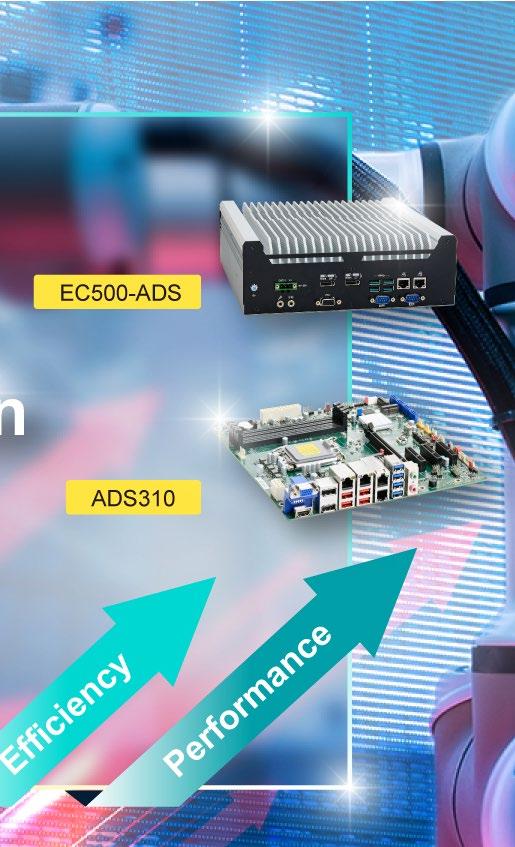
Numerous data transfers, shares and backups are processed through the high-speed 10GLAN on the ADS Series Computers, significantly improving operating efficiency. Also, the wireless high-bandwidth Wifi 6E is supported for the first time with speed transmission up to 6GHz (1.4X faster than Wifi 5 and Wifi 6), making device deployment more flexible and collaboration more real-time and seamless.
In addition, the ADS Series supports 8K resolution with clarity and precision, surpassing the resolving power of the human eye by more than ten times. The result provides greater detail for image processing as well as streaming video and enhances the accuracy of the image and visual computing.
The new ADS Series is designed to help integrators maximize the use of each device, reduce configuration, and lower costs. While improving overall computing performance and efficiency, the ADS Series is also equipped with I/O virtualization of GFX SR-IOV for the first time. It allows the GPU of a virtual machine (VM) to be distributed at nearnative performance levels, significantly reducing the latency caused by the software-based virtual machine. The proof of concept (POC) of SR-IOV with Intel also confirms the VM frame rate remains at 60fps, equal to the native GPU performance (the traditional software-based performance is 28 fps frame rate).
DFI’s new ADS Series of industrial computers offers a full range of performance and efficiency optimizations. From data reading/writing speeds to the transfer to AI computing, the new-gen computing brains will bring unprecedented intelligence and speed to the heavy workloads of AI vision applications, factory automation, medical and retail industries.
Key Features: Powered by 12th Gen Intel® Core™ with the hybrid architecture of CPU and GPU Intelligent work sequencing to optimize workloads Optimal AI technology, supporting AI accelerator cards for accurate inference Support PCIe 5.0, DDR5 high-speed data reading/writing Ultra HD 8K display Support high-speed 10GLAN, 2.5G LAN and 5G, Wifi 6E wireless networks
Main Applications: Factory Automation AOI defect inspection AGV/AMR AI vision Robotic arm Virtual machine for equipment integration on production lines
Medical Medical Imaging AI Diagnostic Assistance Retail Interactive digital signage Traffic Traffic analysis https://www.dfi.com

When embracing the new era of the Industrial Internet of Things (IIoT), many system integrators and engineers face the critical challenge of finding a secure and reliable IIoT-gateway solution that offers regular security patches to remedy system vulnerabilities in a timely manner. Moxa’s newly launched AIG-300 Series IIoT gateways come with Azure IoT Edge integration that adds significant value in the form of unique features that help build a cost- and time-efficient IIoT system.
Seamless Azure IoT Edge Integration for Quick and Reliable Connectivity to the Cloud IIoT gateways need to be highly secure and reliable to facilitate seamless edge-to-cloud data acquisition and device management. The AIG-300 IIoT gateway, seamlessly integrated with Azure IoT Edge and powered by ThingsPro, is a market-leading solution for reliable, quick, and easy data acquisition and device management. Data collected from devices can be transferred to Azure IoT Edge and then on to the Azure IoT Hub with a few simple configuration steps. Conversely, devices can be effectively managed via the route of Azure IoT Hub to the Azure IoT Edge on the AIG series IIoT gateways. This seamless one-stop edge-to-cloud platform can greatly help customers shrink the system development time and cost.
Device Provisioning Made Easier and the Bootup Process Safer Than Ever Before Most IIoT applications are deployed in remote, unmanned, and harsh environments such as a smart grid, energy storage systems, solar fields, oil and gas refineries, and railwayside applications. Maintaining normal operations and monitoring statuses effectively is crucial to these systems. The AIG series gateways, with their wide-temperature design and low power consumption, are well-suited for use in these environments.
With capabilities such are resume file transmission, over-theair (OTA) upgrades, and Secure Boot, the AIG series gateways, located in remote sites, can be upgraded, and maintained to ensure their continuous availability and effectively protected against cyberattacks. To avoid disconnections during device crashes and sudden shutdowns, the AIG series comes with built-in recovery functions to enable rollback to the previous stable version of the firmware for uninterrupted network connectivity at remote sites. When a software upgrade fails, the gateways will automatically revert to the software version in the backup, ensuring system stability. A ThingsPro
tool simplifies the provisioning process by enabling bulk provisioning of IIoT gateways and performing remote software upgrades.
• Advanced IIoT gateways with Arm® Cortex™-A7 dualcore 1 GHz processor, 1 CAN port, 4 DIs, 4 DOs, -40 to 70 °C operating temperature
• Simplify data acquisition and device management
• Powered by ThingsPro and seamless integration with Azure IoT Edge to enable easy, reliable, yet secure cloud connectivity
• Support easy device provisioning
• Provide robust OTA function to prevent system failure during software upgrades
• Equipped with Secure Boot to prevent malicious code execution and software injection attacks
For product information and technical specifications of the AIG Series IIoT gateways, visit the product page.
https://www.moxa.com/en/products/industrialcomputing/arm-based-computers/aig-300-series
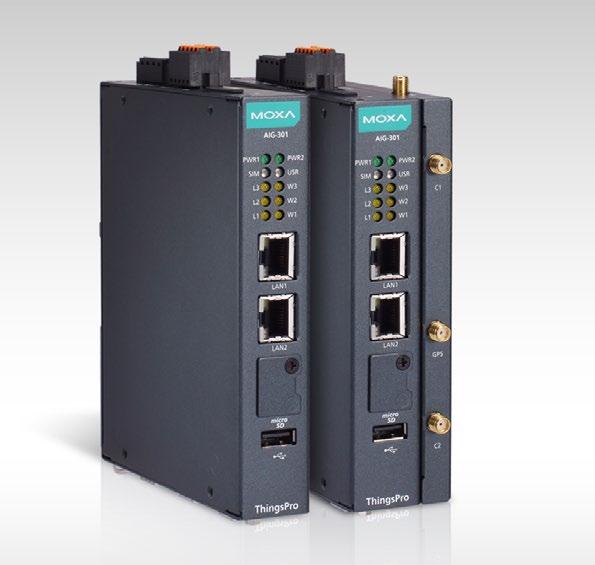
Manelec, manufacturer and supplier of overhead cranes and lifting equipment, VERLINDE partner and member of the Verlinde after-sales service, has supplied a complete set of cranes, gantry cranes and hoists to its longtime customer, AGCO, to equip a new extension to its factory in Beauvais.
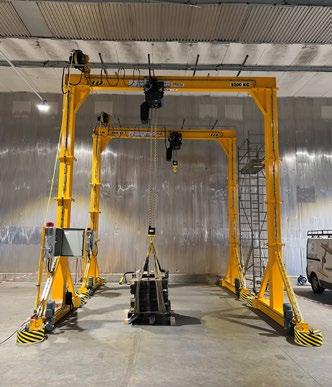
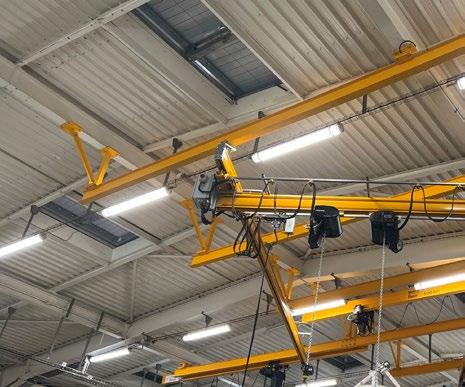
AGCO, an American company founded in 1990, is a global leader in the manufacture and distribution of agricultural equipment. It provides agricultural solutions to farmers world-wide through the distribution of recognized brands and its lines of tractors, combineharvesters, haymaking equipment, seeding and tillage implements, grain storage and protein production systems, as well as spare parts. The group is present in France with several plants and a warehouse.
A new expansion to its tractor manufacturing plant in Beauvais was recently created on an existing industrial site adjacent to the plant. This expansion includes several buildings. AGCO needed to install lifting and handling equipment. AGCO has been working with Manelec since it moved to Beauvais in the 1990s for the supply and maintenance of its lifting equipment. Familiar with the quality of Verlinde services and equipment provided by its partner, AGCO has once again turned to them for equipping its new site.
Mr. Yousfi, Branch Manager at Manelec, says: “AGCO is one of our longtime customers and has been consulting us for the design, manufacture and installation of its lifting equipment for over 25 years. We work in collaboration with their design office to offer them technical solutions best suited to their needs. We are proud of the relationship of trust we have built with them.”
In the fall of 2021, Manelec installed a 2X600 kg overhead crane equipped with two VERLINDE EUROCHAIN VX 10 electric chain hoists and an onboard weighing system to limit the load. These hoists are delivered as standard including various equipment along with an electric safety limit switch for high and low positions and an IP55 lifting and steering motor.
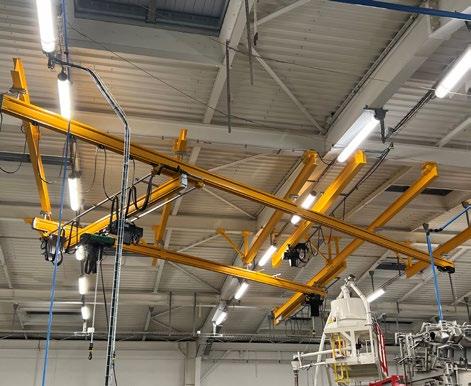
In addition, a monorail with a EUROCHAIN VR16 Verlinde compact two-speed electric chain hoist for loads of 1250 kg has been installed. The hoists, for loads from 800 to 10,000 kg, boast of a new concept of lifting clamps with teeth for a perfect chain drive.
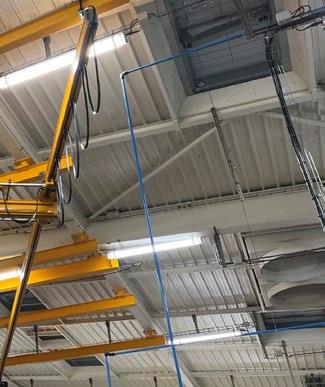
The installation was done on top of existing machines, thus mobilizing Manelec’s experience and know-how for accurate and safe handling of the structures. Manelec used manual hoists for the lifting of beams and aerial platforms.
At the same time, for another building in the expansion site, Manelec supplied a 6.3 ton overhead crane with a 28 m span and a self-supporting structure. It is used for special changes made to tractors. The crane is equipped with a VERLINDE EUROBLOC VT2 electric wire rope hoist having a steering motor with variable speed from 3 to 20 m/min. The installation of this crane required the foundations to be adapted before hand with a 32-meter consolidation pit.
In the spring of 2022, Manelec installed a 5-ton bi-rail crane with a self-supporting structure and two self-propelled gantry cranes of 3200 kg each, autonomous and equipped with radio control.
AGCO is pleased with the equipment in place and continues to plan projects for Manelec.
www.verlinde.com
Showing the mechanical loss rate of different cage materials used on NSK’s low-torque ball bearings for high-efficiency motors

The power usage of motors used in machinery is said to make up 40-50% of the world’s electricity consumption, making these industry-essential devices a key energy reduction target. With this thought in mind, the market is seeing a proliferation of industrial motors claiming to offer improved energy efficiency.
The latest inverter motors are also contributing to lower power consumption as they adjust their rotational speed according to operating conditions. Furthermore, demand is ramping up for new-generation servo motors, which typically find use in industrial robots as they can rotate forwards and backwards for accurate positioning. These three motor types (high-efficiency, inverter and servo) all rely on one common component to help maximize performance and minimize energy consumption: bearings.
Worldwide endeavours to reduce power consumption have led to regulations requiring motor efficiency improvements. A motor’s energy loss comprises of three factors: iron loss (heat generation from the iron core); copper loss (heat generation from the winding); and mechanical loss (due to bearing rotation, for instance). Although mechanical loss can be as small as 1% of motor power consumption, it accounts for 0.4-0.5% of global electricity use, which means the worldwide impact of any reduction would be significant.
Low-torque bearings for high-efficiency motors
NSK has been busy evaluating mechanical loss from bearings using actual high-efficiency motors and real-life operating conditions. The company sought to identify potential reductions in power consumption by developing a test method that allows for the direct evaluation of mechanical loss in bearings. The results from these tests would feed into NSK’s bearing development programme for high-efficiency motors. For instance, the evaluation of a two-pole highefficiency motor running at 3000 rpm revealed that the cause of around 80% of mechanical loss was lubrication resistance, namely the shearing and agitation resistance of grease between the bearing parts. NSK therefore began a project to optimize the type and amount of grease, as well as the bearing’s cage shape.
Subsequent tests showed that optimising the grease quantity reduced mechanical loss by 60% in comparison with conventional bearings. As a further point of note, reducing the grease content in conventional bearings tends to break the oil film and shorten grease seizure life. In contrast, the low-torque bearing developed by NSK uses special grease that, in tests, demonstrated an increase
in grease seizure life of more than 2.7 times. Further tests showed that NSK’s specially developed plastic cage reduced mechanical loss by half that of steel cages, largely because the plastic cage supresses grease agitation resistance between the cage and balls.
NSK’s low-torque bearings, which reduce mechanical loss and allow for longer grease seizure life in high-efficiency motors, are available in sizes from 16 to 170 mm outer diameter.
Inverter motors, controllable with optimal rotational frequency, are useful for delivering energy savings in pumps and blowers. The general development trend is that the frequency requiring control (known as the carrier frequency) is increasing so that the motor can operate with a higher degree of accuracy. However, as the carrier frequency increases, electrolytic corrosion may occur due to highfrequency current in the bearing.
Electrolytic corrosion is a phenomenon whereby sparks generate through the lubricating oil film between the raceway surface and rolling elements, causing local melting and unevenness. This effect also leads to early abnormal running noise and seizure.
Some bearings for small motors feature ceramic balls that do not pass a current to protect against electrolytic corrosion, but there are productivity issues with bigger diameter ceramic balls required for medium and large inverter motors. To remediate this issue, NSK has developed an antielectrolytic-corrosion, ceramic-coated bearing specifically for use in these inverter motors, where the company applies a ceramic spray coating to the outer ring.
The newly developed bearing exhibits excellent electrical insulation, with tests showing around ten times more insulation (using a DC power supply) than general ceramiccoated bearings. As a point of note, the NSK bearing also demonstrates equivalent or slightly better insulation with an AC power supply, satisfying an impedance of 100 Ω or more at 1 MHz frequency.
In terms of mechanical performance, the impact resistance of the coating is about three time that of a general ceramiccoated bearing. Heat dissipation, which is a disadvantage of ceramic coatings, is suppressible using a relatively dense coating compared with that used on conventional bearings, extending both lubricant life and motor life. In tests, the temperature rise during bearing rotation was about 10 °C lower than that exhibited by a general ceramic-coated bearing. The dense coating also means fewer voids and better durability.
NSK’s anti-electrolytic-corrosion, ceramic-coated bearings are available in sizes ranging from 130 to 230 mm outer diameter for medium and large inverter motors.
The precise positioning capability of a servo motor derives from transmitting or reflecting the LED’s light emission signal in the pattern engraved on the encoder plate and feeding the received signal back to the motor controller. However, contaminating the encoder plate’s surface with oil or other
NSK’s ceramic-coated, electrolytic-corrosion-resistant bearings for inverter motors
matter disables the signal reception and feedback of the position information to the motor controller, preventing regular operation.
In a servo motor for a robot, it is necessary to stop the arm and workpiece via an electromagnetic brake. Contaminating the brake plate with oil or other material causes brake slippage. Servo motors used in industrial robots and collaborative robots (cobots) must be highly reliable, so bearings should exhibit low particle emission to avoid contaminating the encoders or brakes.
NSK has developed a bearing for servo motors that uses a low particle emission grease with optimized composition. The bearing also takes advantage of the company’s lightcontact DW seal, which provides excellent contamination protection when torque levels are a consideration.
A series of simulation tests investigated the relationship between bearings and encoder brake plates with regard to the scattering of grease contamination. The tests confirmed that the scatter amount decreases when using bearings with a non-contact seal and low-emission LGU grease from NSK (compared with bearings featuring a non-contact seal and conventional grease). Furthermore, bearings with LGU grease and the light-contact DW seal showed hardly any grease scattering, an outcome that also represents an effective countermeasure against encoder corrosion.
NSK’s low particle emission bearings, featuring LGU grease and DW light-contact seals, are available in sizes from 26 to 120 mm outer diameter to suit all common servo motors. https://www.nskeurope.it/it.html


Demanding die-cast components, such as structural components in the automotive sector (megacastings), place special requirements on the temperature control, in particular on the cooling of so-called hotspots. The jetPulse system from REGLOPLAS offers a reliable and economical solution for cooling hotspots in a die casting die with pinpoint accuracy and reliability.
The spot cooling of so-called hotspots in die-casting dies is an established process for improving the quality and mechanical properties of components with demanding geometries and optimising the cycle time. The trend towards ever larger components, mainly driven by so-called megacasts in the automotive sector, has further increased the need for precise spot cooling systems and has raised the requirements. The jetPulse system from REGLOPLAS offers a suitable solution for every application, configuration and die size. As a supplement to the proven temperature control units and distribution systems for pressurised water and oil from REGLOPLAS, the customer receives a complete temperature control solution for his die casting machine from a single source, including the software for monitoring the entire system and with worldwide local support and service.
The REGLOPLAS jetPulse system offers two unit sizes (30 l or 100 l). Up to six multiJet distributors with 8 channels each can be connected per unit. These reliably cool up to 64 individual hotspots with pinpoint accuracy and cycle controlled. The system is supplemented by the flow rate monitoring of each individual channel with the REGLOPLAS flowControl. The system detects problems in individual cooling channels at an early stage and thus avoids costs due to quality problems and rejects at an early stage. A Profibus interface ensures simple communication between the jetPulse system and the die casting machine.
Powerful, intelligent and energy-saving
The jetPulse 100L has a frequency-controlled, multistage, low-noise pump with a flow rate of up to 100 l/min and a system pressure of up to 30 bar. The pump is equipped with an energy-saving function and is only active while cooling is running. Using intelligent technologies, the system monitors and controls the pump pressure, temperature, flow rate and output. This ensures excellent stability and the highest
degree of safety during the cooling process. The intelligent process monitoring constantly checks the operating data and signals deviations from individually definable limit values before failures occur. Automatic core breakage and leakage monitoring is integrated in each jetPulse cooling cycle. This stops die casting machine immediately if an irregularity is detected in order to prevent possible damage to the tool. The complete system is individually controlled and parameterised in a simple and user-friendly way using the touch screen on the Siemens HMI panel, with easily understandable graphically assisted displays and representations.
The jetPulse system offers customers an extensive system with a sophisticated component architecture from a single source. The robust and compact units can be easily and quickly integrated into new or existing die casting plants and deliver more process reliability, better and more stable product quality and shorter cycle times for demanding components with hotspots at low investment costs. jetPulse from REGLOPLAS yields lower unit costs and high component quality, thus sustainably improving competitiveness.

www.regloplas.com
The extraction of cannabidiol (CBD) and THC from cannabis and hemp benefit of the know-how De Dietrich Process Systems has developed in plant extraction. The company increases its range to cover all steps with ready-to-use installations.
In the field of plant chemistry, the molecules currently being recovered the most are cannabidiol (CBD) and THC from cannabis and hemp. The extraction of these compounds relies on techniques identical to those used by plant extraction processes in which the group already has considerable expertise. Most often initiated by a solvent extraction, using a supercritical CO2 or organic solvent, a multiplicity of subsequent steps then determines specific qualities or types of use: preferential extraction of CBD, THC, pharmaceutical applications or in food supplements.

De Dietrich Process Systems develops turnkey solutions for installing these processes, on customer request, by performing simulations and tests in-house. Based on their knowledge of implementing plant extraction systems, the PGS (Pharma & Green solutions) engineering team relies both on standard solutions available on the market as well as the group’s own proprietary solutions.
https://www.dedietrich.com
Featuring three different screw technologies, AVENTICS Series SPRA rod-style electric actuators offer unmatched versatility that can better meet exacting application requirements.
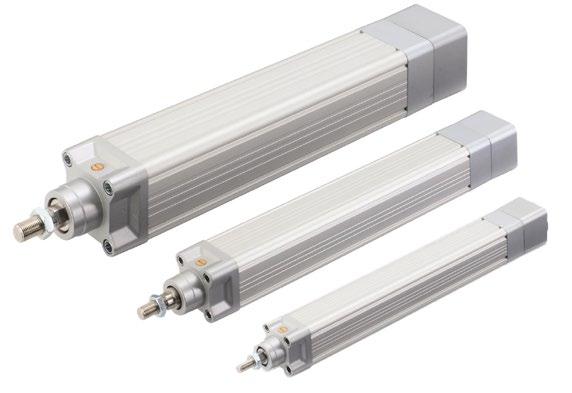
Emerson today launched its new AVENTICS™ Series Servo Profile Advanced (SPRA) Electric Actuators, a line of precise and highly repeatable rod-style cylinders. While only one electric actuator screw type is typically available in the market, the SPRA actuators offer three screw technologies. These include a precision ball screw, which provides exceptional durability and accuracy for applications that need optimal quality or throughput, a cost-effective lead screw option and roller screws for precision, speed and heavy loads.
This versatile range of rod-style cylinders lets users in the automotive, food and beverage, packaging and life sciences industries configure electric actuators to meet exacting application requirements, such as improved sustainability or efficiency, rather than settle for standard approximation.
“With four sizes and multiple mounting options, the AVENTICS Series SPRA Electric Actuators are cost-effective, high-performance solutions that cover most machine automation applications,” said Linda Schwartzen, product marketing manager with Emerson’s AVENTICS actuator business. “Compliance with the ISO-15552 standard offers a wide range of accessories and our online calculation tool and configurator ensures the appropriate implementation and can meet exacting application requirements.”
Interconnected online tools allow users to instantly size and customize electric actuators, with no software installation or registration necessary. The configuration includes a direct download of CAD files, which comprises all elements of the configured solution, such as electric cylinder, accessories, mounting options and motor adapter.
https://www.emerson.com/en-us/catalog/aventics-spra
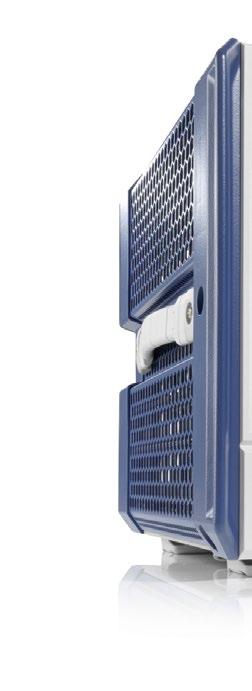
Rohde & Schwarz has paired the outstanding performance of its established R&S RTP oscilloscope with an enhanced user interface and a larger display. The result is an even more flexible oscilloscope in a compact format with a modern look and feel that continues to deliver high-performance signal integrity in real time.
Rohde & Schwarz introduces the new generation of R&S RTP high-performance oscilloscopes, which combine high-class signal integrity measurements with the fastest possible acquisition for real-time analysis. The new models come with a bigger and brighter 13.3” full HD touchscreen and a fully redesigned front panel. Users can take advantage of the crisp 16:9 screen format, which displays waveforms while allowing settings to be altered and changed quickly. The intuitive front panel increases productivity with fast, direct access to primary instrument settings. All this, without compromising the overall instrument footprint to keep occupied desk space to a minimum.
Dr. Andreas Werner, Vice President Oscilloscopes at Rohde & Schwarz, says: “Improving overall usability so that test engineers could focus on the design problems at hand and not on operating the test equipment was paramount to our R&D engineers when we decided to update the R&S RTP. Our oscilloscope offers the outstanding performance and flexibility our customers expect, combined with a very small footprint. It has been ideal for signal integrity analysis in real time since its original launch – and it just got better.”
R&S RTP high-performance oscilloscopes are available in different bandwidth models from 4 GHz to 16 GHz with a sample rate up to 40 Gsample/s. All models also support bandwidth upgrades right up to 16 GHz. At the core of the R&S RTP is the acquisition and processing ASIC from Rohde & Schwarz, which enables an unparalleled acquisition rate of 750,000 waveforms/s, making it easier for engineers to spot, isolate and analyze circuit board design defects. To reliably capture and analyze long events or sequences, Rohde & Schwarz has increased the standard acquisition memory to 100 Mpoints per channel, with a further upgrade option of
up to 3 Gpoints per channel. This makes the R&S RTP a new benchmark in this class.
The hardware implemented 16 Gbps clock data recovery (HW-CDR) that enables real-time eye diagrams for longterm monitoring of high-speed serial interfaces, is a highlight of the R&S RTP. The new R&S RTP-K136 and K137 options support data eye analysis of sequential bits in an acquired data stream with maximum data rates of 8 Gbps and 16 Gbps. The timing for the bit slicing is based on the continuously running HW-CDR. This has significant advantages relative to traditional post-processing with a software-based CDR. Users can combine this function with the real-time deembedding and real-time differential math functions of the R&S RTP to complete debugging or searches for signal faults in a fraction of the time.
While supporting a wide range of applications, Rohde & Schwarz provides even more flexibility with the new R&S RTP-K39 user defined math option. It allows test engineers to call a Python script for complex calculations and display the results as a math signal on the oscilloscope, creating endless possibilities for users to analyze the captured data as needed. Further new application options include the R&S RTP-K27 MIPI D-PHY V2.1/2.5, the R&S RTP-K28 MIPI C-PHY V2.1 and the R&S RTP-K102 USB 3.2 Gen 1 & 2 RX compliance tests. They utilize the R&S ScopeSuite
compliance test framework to support automated tests with image based guidelines and summarize results in test reports.
The R&S RTP is the most compact and lightest highperformance oscilloscope on the market with a footprint nearly half the size of comparable instruments. The sophisticated cooling concept and silent fans also make it the quietest oscilloscope in its class.
Rohde & Schwarz will give one of the first public demonstrations of the new R&S RTP at the embedded world 2022 conference in Nuremberg from June 21 to 23 at booth 4-218.
The new R&S RTP high-performance oscilloscopes are now available from Rohde & Schwarz.
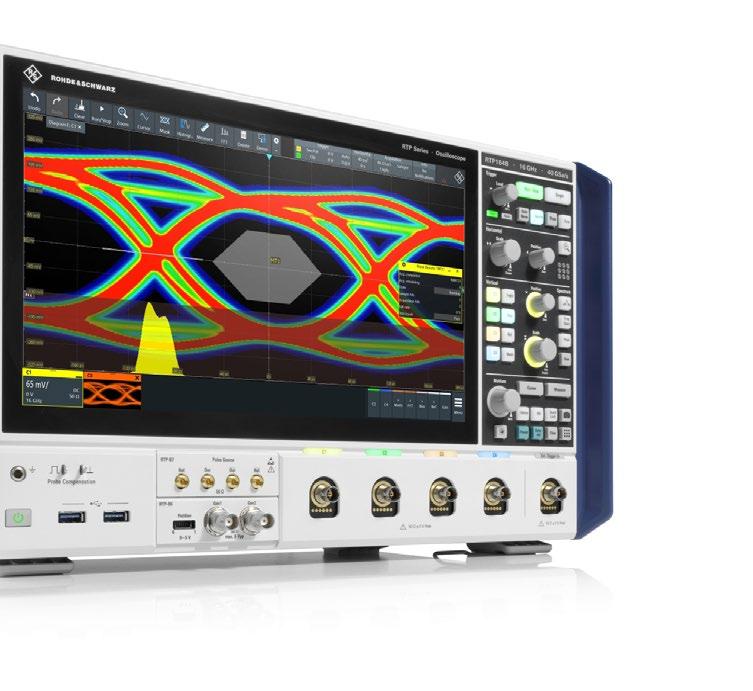
www.rohde-schwarz.com/rtp
Robustel are glad to announce that our R1510 industrial cellular IoT gateway has been adopted by NTT DOCOMO. This milestone is major progress for Robustel on its mission to help customer’s businesses in industries across the world to solve their connectivity problems with robust, secure and scalable IoT and M2M solutions.

Industrial cellular IoT gateway R1510
NTT DOCOMO, have developed a IoT service package called “DOCOMO IoT Managed Service”, it is a service bundle combining communication devices, connectivity and maintenance in a complete service offering. This service has wide reaching applications beyond the IoT industry, functioning as an alternative solution for any customer using ISDN/PSTN and 3G networks as they are scheduled to be shut down in the future.
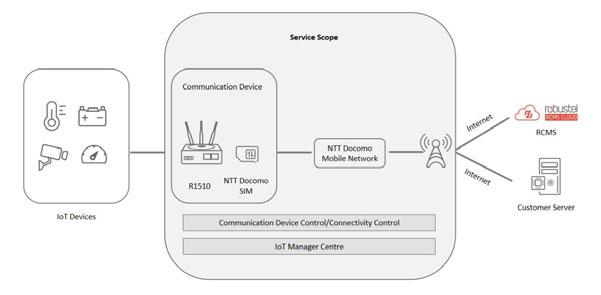
The Robustel R1510 IoT Router is an industrial LTE router offering cost competitive connectivity with various interfaces. With thousands of units regularly being shipped worldwide, the R1510 has been certified by over 20 mobile network operators (MNOs) in Japan, the United States, Europe, Southeast Asia, etc. Therefore, the router can be quickly deployed in IoT projects not only in Japan but also globally.
The R1510 offers an industrial ruggedized housing that can be used in harsh environments with an operating temperature range from -25 to 75 °C. In addition to the two Ethernet interfaces it can also support digital input/outputs (DI/DO) as well as Wi-Fi in client and access point modes.
For more information about R1510, please visit https://www.robustel.com/en/product/r1510-industrialcellular-vpn-router/
Robustel Cloud Manager Service (RCMS) Value Added Robustel Cloud Manager Service (RCMS) is a modular IoT cloud software platform compatible with all Robustel products.
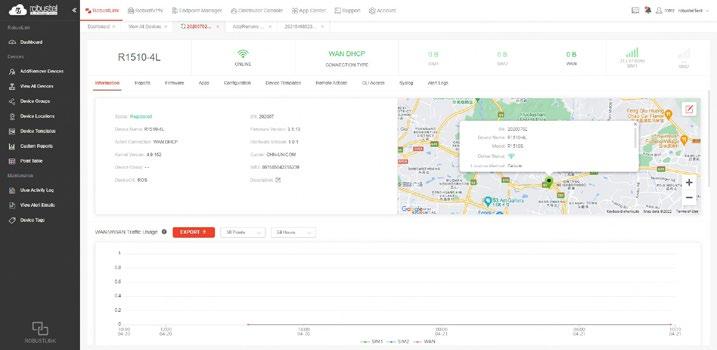
RCMS is designed from the ground-up to empower Robustel customers to build their IoT Solution(s) in a manner that is scalable, cost effective and can evolve quickly with the market.
Designed to work hand-in-hand with RobustOS, RCMS unlocks the true potential of Robustel products giving customers the ultimate range of monitoring, management and control functions.
With its modular design RCMS enables new APPs to be added to the platform without interfering with core behavior, to create new functionality and allow for integration with thirdparty applications.
For more information about RCMS, please visit https://www.robustel.com/en/robustel-cloud-managerservice/
Strong Local Support Ability
Together with our local distribution partner PALTEK Corporation (Headquarters: Kohoku-ku, Yokohama, CEO: Tadahito Takahashi, hereinafter referred to as PALTEK), we have also established a strong operational support system to match the service of NTT DOCOMO, offering local maintenance, warranty and support systems which have been a critical factor in the adoption of this solution.
https://www.paltek.co.jp www.robustel.com
KCKP10™
Available for many indexable milling product lines, the new grades come with a golden top layer for fast, easy wear identification, ensuring maximum tool life for each cutting edge.

New grades offer higher wear resistance and longer tool life, increasing productivity in cast iron and compacted graphite cast iron machining.
Kennametal has introduced the KCK20B and KCKP10 indexable milling grades for higher wear resistance and up to 30% longer tool life when machining cast iron and compacted graphite iron components. Both grades offer higher productivity and consistent, repeatable performance during roughing, semi-finishing, and finishing operations.
“The new grades feature High-Power Impulse Magnetron Sputtering (High-PIMS) technology that provides a smoother insert surface and optimal layer adhesion for less flank wear – one of the leading causes of insert failure,” says Gil Getz, Product Manager, Kennametal. He notes that the new coating technology also increases cutting edge strength. “The result is high-performance milling in a broad range of cast iron alloys, including grey cast iron, ductile cast iron, and compacted graphite cast iron.”
KCK20B and KCKP10 are suitable for wet or dry cuts. These include rotor hubs used in windmills, pump housings, steering knuckles and gear housings for heavy equipment, and automotive components like crankshafts and cylinder heads. While KCK20B delivers higher productivity in roughing and semi-finishing operations, KCKP10 is applicable for
Flank
finishing operations, but also works exceptionally well when profiling and copy milling cast iron and steels up to 45HRC.
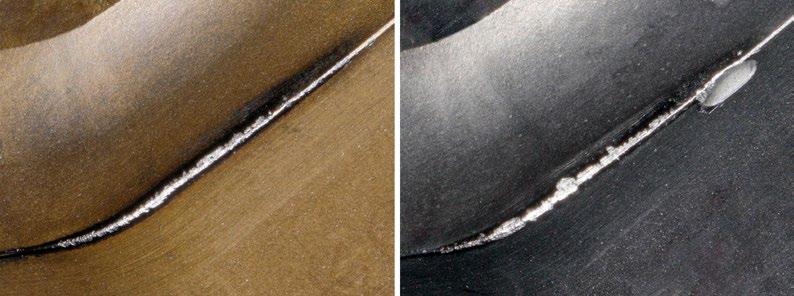
“For customers where high tooling cost and downtime associated with tool changes are especially important, KCK20B and KCKP10 grades promise to increase tool life tremendously,” says Getz. “And for those who wish to increase throughput, the new grades deliver there as well. Either way, it is a win-win for any shop machining cast iron.”
Click here for more information: KCK20B™ & KCKP10™

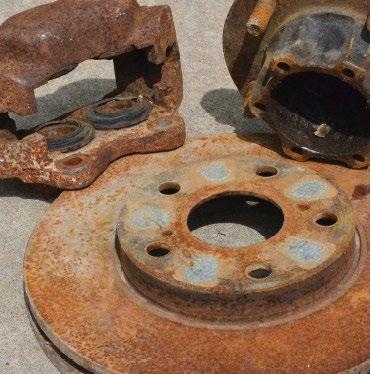
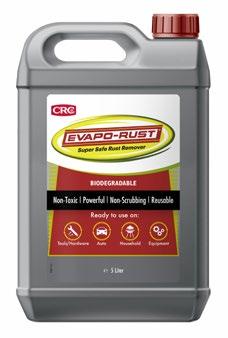
Evapo-Rust from CRC Industries is a water-based rust remover that is biodegradable and non-toxic for the user and the environment. Its award-winning formula eliminates rust without having to scrub or sand the part being treated. It is economical, as the bath can be reused several times. Evapo-Rust can be used to restore metal parts and tools rapidly and efficiently in all types of industry: automotive, industry, construction, marine, metalworking, etc.
Evapo-Rust, a CRC industries product, is a professional rust remover, with a water-based formula that is effective and easy to use. The part simply has to be immersed in a bath of the ready-to-use solution, the rust then detaches from the metal surface and remains suspended in the liquid. The active ingredient in the formula binds exclusively to iron, removing only the rust from steel, iron, cast iron and chrome. It thus preserves the nonoxidized metal and is harmless to other metals. Compared to conventional acidic or basic strippers, Evapo-Rust is nontoxic, non-caustic and non-corrosive, and does not affect plastic, PVC, Viton and non-oxidized paint on treated parts.
Evapo-Rust is a powerful formula that treats the thickest layers of rust down to bare metal, leaving no residual layer and requiring no sanding or blasting. The treatment is fast, a light layer of rust is removed in only 5 to 30 minutes, a medium layer in 6 hours, and a thick layer in 12 to 24 hours. It works most efficiently with a bath temperature of approximately 50 °C.
Evapo-Rust has won awards for its effectiveness in the United States. It has built up a solid reputation and is frequently recommended by users on networks which specialize in the treatment of parts.
The same Evapo-Rust bath can be reused several times, depending on the intensity of the rust layer on the treated parts, which makes it economical. 5 litres of Evapo-Rust can remove 0.3 Kg of pure dry rust. Moreover, preliminary
cleaning is only necessary in the case of very dirty and greasy parts.
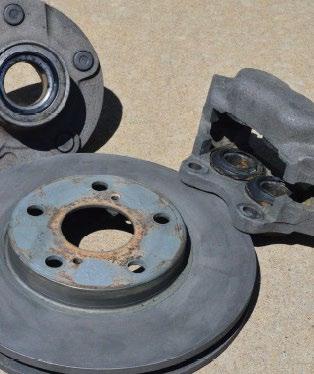
Once the part has been derusted, it is recommended to protect it with an anticorrosion treatment or paint. CRC Industries offers a wide range of products for different applications.
Safe to use for both the user and the environment

Evapo-Rust’s water-based formula, biodegradable in accordance with the OECD 301B standard, does not emit any unpleasant odours or volatile organic compounds (VOC) that could potentially harm the environment. It is perfectly soluble in water and is easily removed after use. It is ph-neutral, so it presents no risk of skin irritation or danger to the user’s eyes. Moreover, it is non-flammable, which simplifies its conditions of use and storage.
Evapo-Rust is available in 1l, 5l and 10l drums, with labelling in 24 languages. It is certified with CE and UKCA marking for the UK market.
The WCE4 will be a small-to-medium job shop staple with advanced, versatile geometry features at an affordable price. The WCE4 is offered in both ball nose and square end configurations.
New solid end milling platform offers affordable performance and reliability in steel, stainless steel and cast-iron applications.
WIDIA™ announced today the launch of the WCE solid end milling platform, delivering affordable performance and reliability for small to medium machine shops. The initial release of the WCE platform features WCE4, a four-flute geometry which combines advanced, high-performance features with a brand new, versatile grade offered at a highly competitive price.
“With its new design, the WCE4 delivers the next generation of versatile end mills to help our customers be more productive and efficient,” said Tamir Sherif, Solid End Milling Global Portfolio Manager, WIDIA. “The WCE4 is an attractively priced tool for small-to-medium shop floors where reliability and consistent tool life are high priorities.”


Two key features of the tool are its asymmetrical index and variable helix. The combination of the two reduce vibrations and enable heavy cuts, while the new grade, WU20PE, enables versatility on steel, stainless steel and cast-iron applications. These design features, coupled with the fourflute geometry, deliver an end mill with reliable performance and application versatility – even in demanding operations such as full slots and heavy cuts.
The WCE platform includes four-flute, square-end and ball nose end mills with both straight and Weldon shanks and is available in both metric and inch dimensions. The WCE5 five-flute geometry will be released later in 2022. Orders for the WCE4 end mill, as well as other WIDIA metal cutting tooling, can be placed through WIDIA authorized distribution partners.
https://www.widia.com
The new M211 Label Printer can easily be clipped to any belt. It connects seamlessly to smartphones via Bluetooth and is driven by Brady’s Express Labels App. The app allows to quickly design, preview and print labels and to integrate data from spreadsheets. No other phone driven label printer today matches the label design possibilities of the M211. In addition, designs can be saved and shared between colleagues, either in the field or at the office.
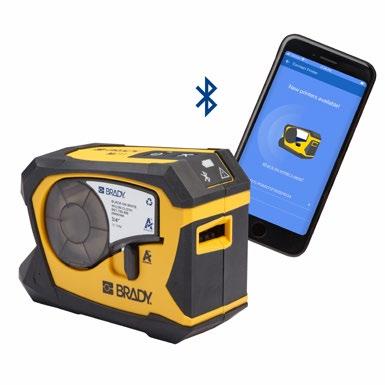
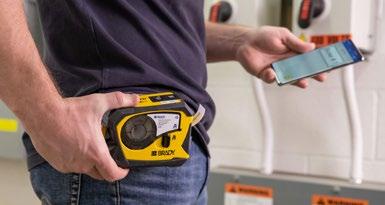

Quite unique for an entry-level portable label printer, is the M211’s ability to print on both continuous and presized labels. Brady offers M211 users 90+ different label cartridges to choose from. These include general purpose and dedicated labels, designed for reliability in specific applications. Brady has technical data sheets with label test results that evaluate adhesion to various types of flat and curved surfaces, and label print resistance to humidity, abrasion, heat, cold, weathering and other influences.
The new M211 Label Printer prints up to 300 labels on a single battery charge. Yet the system weighs only 0.5 kg, and has a compact design to make it extremely wearable. At the same time, the M211 is a tough device. Tests indicate the tiny printer survives 1.8m falls, 110 kg crushes and military specification shocks. Next to its ability to survive almost any job site, the M211 features “drop-lock-print” label cartridges designed for swift “on-the-job” consumable switching.
https://www.brady.eu/
Expanding from grooving, cutoff, facing, and turning now also to profiling applications: the new Beyond Evolution GUP-V insert.
The new Beyond™ Evolution™ profiling geometry enhances the capability of the best -selling grooving & cut-off platform.
Kennametal has introduced the new Grooving Universal Positive Profiling geometry (GUP-V), expanding on its Beyond Evolution grooving & cut-off platform. With the addition of the new V-shaped single-sided insert, Beyond Evolution can cover now more applications than ever and helps to save tooling cost.
“Since the introduction of the Beyond Evolution platform, we have continued to focus on enhancing its versatility, and the new GUP-V multidirectional profiling insert is no exception’ says Robert Keilmann, Product Manager, Kennametal. “Together with the other insert geometries, users can now groove, cutoff, face, and turn a wide variety of materials with just a single tooling system. Simply put, when a customer adopts Beyond Evolution for their turning needs, they do not need anything else. It is that versatile.”
Like all other Beyond Evolution inserts, the GUP-V profiling insert leverages a proprietary Triple-V seating design that features contact on the top, bottom, and back of the insert, providing superior rigidity that results in excellent surface finishes and dimensional accuracy while delivering the highest metal removal rates.
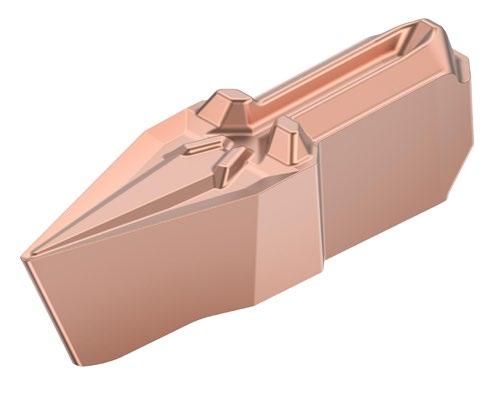
Pinche aquí para más información: Beyond Evolution
All Beyond Evolution insert styles feature the Triple-V Seating: Tight grip on the back (1) and top & bottom (2) provides maximum stability, especially when operating multidirectional turning and profiling.
